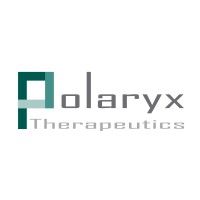预约演示
更新于:2025-05-07
TPP1
更新于:2025-05-07
基本信息
别名 Cell growth-inhibiting gene 1 protein、ceroid-lipofuscinosis, neuronal 2, late infantile (Jansky-Bielschowsky disease)、CLN2 + [14] |
简介 Lysosomal serine protease with tripeptidyl-peptidase I activity (PubMed:11054422, PubMed:19038966, PubMed:19038967). May act as a non-specific lysosomal peptidase which generates tripeptides from the breakdown products produced by lysosomal proteinases (PubMed:11054422, PubMed:19038966, PubMed:19038967). Requires substrates with an unsubstituted N-terminus (PubMed:19038966). |
关联
13
项与 TPP1 相关的药物靶点 |
作用机制 TPP1 刺激剂 |
在研适应症 |
非在研适应症- |
最高研发阶段批准上市 |
首次获批国家/地区 美国 |
首次获批日期2017-04-27 |
靶点 |
作用机制 TPP1 刺激剂 [+1] |
在研适应症 |
非在研适应症 |
最高研发阶段临床3期 |
首次获批国家/地区- |
首次获批日期1800-01-20 |
靶点 |
作用机制 TPP1 gene transference |
原研机构 |
在研适应症 |
非在研适应症- |
最高研发阶段临床2期 |
首次获批国家/地区- |
首次获批日期1800-01-20 |
13
项与 TPP1 相关的临床试验NCT04637282
A Randomized. Multicenter, Double-Blind, Placebo-Controlled Safety, Tolerability, and Efficacy Study of PLX-200 in Participants With Mild-to-Moderate Juvenile Neuronal Ceroid Lipofuscinosis (CLN3) Disease
The purpose of this study is to evaluate the safety and efficacy of multiple doses of PLX-200 in patients with CLN3 disease.
开始日期2024-12-01 |
申办/合作机构 |
NCT05791864
A First-in-Human, Open-Label, Dose-Escalation Study to Evaluate the Safety and Tolerability of Gene Therapy with TTX-381 for the Ocular Manifestations Associated with Neuronal Ceroid Lipofuscinosis Type 2 (CLN2) Disease
This is a first-in-human, open-label, single ascending dose study of TTX-381 for the treatment of ocular manifestations of CLN2 (Batten disease).
开始日期2023-05-17 |
申办/合作机构 |
NCT05152914
Intravitreal Enzyme Replacement Therapy to Prevent Retinal Disease Progression in Children With Neuronal Ceroid Lipofuscinosis Type 2 (CLN2)
This is a phase I/II randomized, masked, clinical trial to determine the safety and efficacy of intravitreal administration of cerliponase alfa.
开始日期2021-11-01 |
100 项与 TPP1 相关的临床结果
登录后查看更多信息
100 项与 TPP1 相关的转化医学
登录后查看更多信息
0 项与 TPP1 相关的专利(医药)
登录后查看更多信息
1,021
项与 TPP1 相关的文献(医药)2025-06-01·Phytomedicine
Mai-wei-yang-fei decoction protects against pulmonary fibrosis by reducing telomere shortening and inhibiting AECII senescence via FBW7/TPP1 regulation
Article
作者: Li, Tingyuan ; Huang, Tongxing ; Wei, Yun ; Pan, Tingyu ; Wu, Jieyu ; Bai, Le ; Wang, Jing ; Wang, Zhichao ; Zhou, Xianmei ; Zhao, Yang ; Zhu, Dongwei ; Zhao, Qi ; Feng, Fanchao
2025-06-01·Bioorganic Chemistry
Cationic AIEgens with large rigid π-planes: Specific bacterial imaging and treatment of drug-resistant bacterial infections
Article
作者: Shen, Lingyi ; Peng, Senlin ; Wang, Qian ; Xu, Hong ; Redshaw, Carl ; Wang, Zhi-Yong ; Zhang, Qi-Long ; Yang, Xianjiong ; Zhou, Xu
2025-05-01·Veterinary Medicine and Science
The Impact of Dietary Melatonin on Heart and Lung Telomere Length and Shelterin Protein Gene Expression of Pulmonary Hypertensive Broiler Chickens
Article
作者: Gheytaspour, Peyman ; Bahadoran, Shahab ; Hassanpour, Hossein
26
项与 TPP1 相关的新闻(医药)2024-09-27
摘要:腺相关病毒(AAV)因其极低的致病性以及在不同组织中建立长期基因表达的能力,已经成为临床基因治疗中的关键传递工具。重组腺相关病毒(rAAV)经过工程改造以增强特异性,并被开发为治疗各种疾病的工具。然而,随着rAAV作为治疗方法的更广泛应用,需求的增加为现有的生产方法带来了挑战。目前有七种基于rAAV的基因治疗产品获得了监管机构的批准,但人们仍然担心在人类中安全使用高剂量病毒疗法,包括免疫反应和不良反应,如基因毒性、肝毒性、血栓性微血管病变和神经毒性。在这篇综述中,我们探讨了AAV生物学,重点介绍了当前的载体工程策略和制造技术。我们讨论了rAAV在眼部、神经系统、代谢、血液学、神经肌肉和心血管疾病以及癌症的临床试验中的应用。我们概述了rAAV引发的免疫反应,处理了相关的副作用,并讨论了减轻这些反应的策略。我们希望讨论该领域的最新进展和当前挑战,能为研究人员和临床医生提供指导,帮助他们了解不断发展的基于rAAV的基因治疗领域。
1.引言
基因治疗代表了一种开创性的方法,用于解决遗传疾病,它采用非病毒或病毒载体在目标细胞内修改基因表达的一系列策略。一种常见的策略是基因替代疗法,将有缺陷基因的功能副本引入活细胞中。2017年,美国食品药品监督管理局(FDA)批准了首个基因治疗产品Luxturna,这是针对勒伯先天性黑蒙2型(LCA2)的基因替代疗法,这一策略达到了一个重要的里程碑。或者,基因沉默疗法旨在抑制或沉默目标基因,主要是通过RNA干扰。例如,Patisiran是一种小干扰RNA,用于治疗遗传性转甲状腺素淀粉样变性。另一种策略是基因组编辑,可以通过基于CRISPR的技术开发,允许直接修改体细胞基因组。正在开发可以执行RNA编辑的修改CRISPR系统。此外,基因表达可以通过DNA甲基化、组蛋白修饰和微小RNA调节来表观遗传地改变。这种方法具有可逆性和多功能性的优势,使其能够根据疾病进展和治疗反应进行调整。创新策略,如利用抑制tRNAs来实现过早终止密码子的读通,为挽救病理性无义突变并恢复基因功能提供了途径,这是在内源性调节下进行的。无论选择哪种策略,基因治疗都可以在体外或体内实施。体外基因治疗涉及提取患者细胞,对其进行基因修饰,然后将它们重新引入患者体内。相比之下,体内基因治疗直接将遗传物质传递到目标组织。到目前为止,共有14种体外和29种体内基因治疗获得了批准,主要是通过FDA(图1)。在这些批准的基因治疗中,有17种是非病毒基础的,而26种是病毒基础的。已经研究了各种病毒载体用于体内基因治疗,包括腺病毒(Ad)、逆转录病毒、慢病毒和单纯疱疹病毒(HSV)。腺相关病毒(AAV)载体已经成为临床试验和FDA批准应用的首选(图1)。这是因为它们具有广泛的组织嗜性、相对良好的安全概况以及多样化的制造过程。重要的是,AAV是非致病性的,很少整合到宿主基因组中,并且可以维持长期的转基因表达。此外,基于某些AAV血清型的载体天生能够高效地进入细胞和转基因表达,这增强了转导效率。
图1 获批的基因治疗产品和递送平台。基因治疗产品通常针对1) 体外基因治疗,受影响的患者细胞被分离,在细胞培养中进行遗传修饰、扩增、富集,然后重新输回患者体内,作为活性药物(例如,CAR-T细胞,Lyfgenia,Casgevy);2) 体内基因治疗,直接给患者施用以实现治疗效果(例如,Gendicine,Kynamaro,Imlygic,Luxturna,Onpattro)。基因治疗药物的递送平台主要分为两组:病毒载体和非病毒载体。病毒载体基因治疗利用病毒作为基因递送载体,包括AAV、腺病毒、逆转录病毒、慢病毒和单纯疱疹病毒。非病毒载体基因治疗包括反义寡核苷酸、siRNA和基于细胞的CRISPR基因组编辑。CAR-T是嵌合抗原受体(CAR)T细胞治疗,SMA是脊髓性肌肉萎缩症,AADC是芳香族L-氨基酸脱羧酶缺乏症,DMD是杜氏肌营养不良症,LCA2是莱伯先天性黑蒙症2型,hATTR是遗传性转甲状腺素淀粉样变性。*表示非FDA批准的基因治疗。图表由Biorender.com创建。
最初在20世纪60年代中期作为Ad制剂的污染物被发现,野生型AAV(wtAAV)是一种非包膜病毒,包含一个带有两端倒置末端重复序列(ITRs)的单链DNA(ssDNA)基因组(图2)。AAV生物学的研究导致了成功克隆和测序wtAAV2基因组。在1990年代和2000年代,发现了具有不同组织嗜性的多种AAV血清型,从而引入了靶向基因传递方法的途径。研究报告称wtAAV基因组可以整合到宿主染色体中,促进稳定、长期的转基因表达。在2000年代,进行了工程AAV衣壳的工作,以增强组织特异性和转导效率,以及提高重组AAV(rAAV)的安全性。这已经推进了基于rAAV的临床试验的成功,特别是对于单基因罕见疾病,导致rAAV基因治疗产品的监管批准。同时,开发了各种方法来扩大rAAV制造,引起了对基于rAAV的基因治疗的兴趣。最近,CRISPR技术的出现彻底改变了基因治疗的格局,通过rAAV将精确的基因编辑传递到细胞中。基于rAAV的基因治疗因其独特的属性而成为一种潜在的治疗方法,可以治愈以前无法治疗的遗传疾病,包括其小尺寸、非致病性、多功能组织嗜性、稳定的转基因表达、复制无能、可工程化的衣壳以及适应多种有效载荷传递的多功能性。尽管取得了一些早期成功,但许多问题和挑战限制了其广泛应用,特别是对于复杂疾病。这些问题包括有限的货物容量、对高系统剂量的免疫反应、潜在的基因毒性、实现组织特异性的挑战以及制造复杂性。在这里,我们描述了rAAV基因治疗的基础AAV生物学和工程,讨论了AAV载体学的关键原则和当前的制造方法,并概述了rAAV基因治疗的临床应用和挑战,用于治疗广泛的人类疾病。最后,我们确定了我们当前理解中的空白,提出了解决持续挑战的潜在解决方案,并概述了这个快速发展领域的未来方向。
图2 AAV生物学研究和基因治疗发展的历史里程碑。数十年对AAV生物学的研究带来了对其结构、生物学、载体学和基因治疗应用理解的关键进展。AAV研究和发展的历史里程碑按时间顺序总结如下。这些进展为成功的临床试验和监管批准rAAV基因治疗药物铺平了道路,以治疗各种人类疾病。图表由Biorender.com创建。
2.AAV生物学和载体工程
2.1.作为自然病毒的AAV
结构和基因组。AAV具有由60-mer亚基组成的二十面体衣壳和由每个末端145 bp T形ITRs包围的4.7 kb ssDNA基因组。衣壳由病毒蛋白(VPs)VP1、VP2和VP3以1:1:10的比例组装而成。VP3由保守的β-链组成,这些链通过表面暴露的可变环连接。这些结构塑造了AAV表面形态,并决定了AAV血清型特异性功能。AAV衣壳在每个五倍轴上有一个带有孔状开口的通道,三倍轴周围有突出物,二倍轴上有一个凹陷。
wtAAV基因组包含两个主要的开放阅读框,编码四个非结构复制基因(Rep)和三个结构衣壳基因(Cap),以及一个参与衣壳组装的组装激活蛋白的ORF。此外,编码在Cap基因内不同阅读框内的膜相关附属蛋白(MAAP)的功能仍然不清楚。ITRs主要作为病毒复制的起点,并提供包装信号。
血清学调查和非致病性。不同的wtAAV血清型以VPs和ITRs的变化为特征,主要从人类和非人灵长类动物(NHPs)中分离出来。人类血清学调查表明,相当比例的人群对多种AAV血清型具有中和抗体(NAbs)。一项对888名健康志愿者的人类血清样本的研究发现,对AAV2的NAbs最普遍,其次是AAV1、AAV7和AAV8。另一项研究显示,对血清中除AAV2外的其他血清型的NAbs最普遍的是AAV1(74.9%)、AAV6(70.1%)、AAV5(63.9%)、AAV8(60.4%)和AAV9(57.8%)。
作为Parvoviridae家族中的Dependoparvovirus,野生型AAV需要来自辅助病毒(如Ad或HSV)的必需基因来促进其基因组的复制和转录,包括Ad E1、E2a、E4和VA RNA基因。因此,野生型AAV不能独立复制并产生新的病毒颗粒,但可以通过作为环状单体或串联体的染色体外DNA在宿主细胞中建立潜伏感染。值得注意的是,在体外感染中,大约0.1%的野生型AAV2基因组整合到19号染色体长臂上一个特定区域(19q13-qter),称为AAVS1位点。尽管AAV被认为是非致病性的,但最近的研究报道AAV2与全球儿童中未解释的急性肝炎有关。没有直接证据表明AAV2如何引发肝炎的机制,但有建议认为对AAV2的异常免疫反应可能会介导肝毒性。然而,这些研究承认COVID-19感染可能是一个促成因素,并报告称大多数急性肝炎病例在没有长期免疫抑制的情况下得到解决。
2.2.作为基因治疗的传递载体
载体学和组织嗜性。自然存在的野生型AAV正在迅速进化,产生了作为病毒“类群”的广泛基因组多样性。在过去的二十年中,至少从Ad库存、人类/NHP组织和其他哺乳动物或非哺乳动物物种中鉴定出12种AAV血清型和1000多个变体。这些血清型对各种细胞或组织有不同的偏好,这被称为嗜性(表1)。AAV血清型之间的基因组差异主要发现在病毒衣壳序列的可变区域,特别是VP3,这在决定嗜性中起着至关重要的作用。然而,许多其他过程和与宿主蛋白的相互作用可能会影响嗜性,包括细胞表面受体、细胞内摄取、细胞内转运、核输入、病毒脱壳、第二链DNA合成以及基因组环化和串联化。
野生型AAV2基因组最初在1980年代被克隆,作为rAAV的模板。rAAV具有与野生型AAV相同的衣壳序列和结构,但不包含任何野生型AAV蛋白编码序列,而是包含在4.7 kb包装能力内的治疗效果基因表达盒。rAAV基因组中唯一的病毒元素是ITRs。rAAV主要由瞬时转染的HEK293细胞中转补Rep/Cap和Ad辅助基因生产。具有AAV2 ITRs的rAAV基因组可以与不同AAV血清型的衣壳进行转包装,以改变其转导特性。转导途径。尽管对野生型AAV生物学的理解有所提高,但rAAV与细胞表面相互作用并将转基因传递到宿主细胞核的机制仍然知之甚少。越来越多的研究表明,病毒衣壳最初通过主要受体(如糖苷、糖蛋白或唾液酸)粘附到细胞表面,然后与共受体蛋白相互作用。例如,rAAV2与硫酸肝素蛋白多糖(HSPG)结合,rAAV1、rAAV4和rAAV5主要与唾液酸相互作用,rAAV9与N-连接的半乳糖相互作用。衣壳上不同的结合位点被认为决定了其嗜性,因此正在努力在这些位点上工程化AAV变体,以增强特定细胞或组织的转导能力。最近的全基因组筛选研究发现了新的宿主蛋白促进rAAV转导,包括被指定为AAV受体(AAVR)的I型跨膜蛋白KIAA0319L。另一个普遍存在的宿主蛋白,G蛋白偶联受体108(GPR108),在几种rAAV血清型的转导中起作用。尽管在体内敲除AAVR和GPR108会减少转导,但细胞表面结合在很大程度上不受影响,这表明这些宿主蛋白主要有助于附着后的转导过程。
在与细胞表面结合后,rAAV通过内吞作用内化,其机制可能因细胞类型和rAAV血清型而异。内吞体内的rAAV颗粒经历pH依赖的构象变化,然后通过跨高尔基网络转运。rAAV颗粒从内吞体和跨高尔基网络中逸出,然后通过核孔复合体进入细胞核。一旦病毒颗粒进入细胞核,ssDNA基因组被释放并通过称为第二链合成的过程转化为双链DNA(dsDNA)。从基因组3′端的自引导ITR开始启动转录。通过突变内部ITR基序可以将基因组制成dsDNA结构,这允许与单链rAAV(ssAAV)基因组相比,更快的复制和增强的转导。然而,这种自互补AAV(scAAV)基因组设计将包装能力减半。dsDNA基因组随后经历环化和串联化,稳定载体基因组,使其在有丝分裂后细胞中以染色体外方式持续存在。值得注意的是,ITR序列也可以作为重组元件,促进载体基因组重组。rAAV转导途径涉及多个细胞事件,可能在任何步骤失败或被宿主破坏,削弱或阻止转导。因此,充分理解这一途径将有助于识别影响rAAV转导效率的其他关键宿主因素。
2.3.rAAV工程
rAAV衣壳序列和基因组DNA货物,包括启动子、转基因、增强子和ITRs,都在进行深入研究。本节介绍几种工程策略,以修改rAAV以获得更好的转导效率和组织特异性。衣壳工程用于转基因传递。衣壳工程是为不同临床应用开发rAAV的主要策略。它主要包括三种方法:分离自然发生的AAV变体、合理设计和定向进化(图3)。最近,使用生物信息预测和机器学习(ML)的基于计算机的方法已成为协助衣壳工程的新工具(图3)。自然发生的AAV变体:在AAV开发的早期,人体组织是发现新AAV的关键来源。从1965年到2004年,只有有限数量的AAV主要来自人类临床样本,随后被载体化并进行测试。AAV9最初在人类肝脏组织中被发现,但它具有强烈的大脑嗜性,因为它能够穿过血脑屏障(BBB),使其成为中枢神经系统(CNS)转导的常见选择。AAV7和AAV8是从恒河猴的心脏和淋巴结中分离出来的,表现出在骨骼肌和肝脏中的卓越嗜性。研究表明,40-80%的人对已知野生型AAV血清型有抗体,这突出了发现更多血清学上不同的AAV的必要性。在人类和NHP以外的物种中筛选AAV血清型,以找到可以避免遇到针对人类AAV的预先存在的抗体的中和效应的衣壳,但这些在人类中的转导可能有限。因此,发现人类衍生的AAV变体并筛选具有增强转导和特定组织嗜性的候选物一直是一种常见的方法。AAVv66,一种通过长读序列从人类样本中分离出来的AAV2变体,与AAV2相比,显示出增强的生产和CNS转导。这些发现表明,自然变体可以为改善组织特异性转导提供有价值的工具。虽然只有少数团体继续评估自然衣壳变体作为基因治疗的潜在载体,但来自自然AAV的rAAV仍然是当前临床研究中的主导选择。
图3 开发新型AAV变体的策略。a 可以从人类和非人灵长类动物(NHP)组织中通过高循环PCR和高通量测序分离出自然发生的AAV变体。b 合理设计利用AAV生物学的知识来修改AAV衣壳中的相关氨基酸,以增强转导能力或逃避免疫监视。c 定向进化是一种工程方法,用于开发具有指定特异性的新型AAV变体,包括随机或定义的肽段插入、衣壳重组、易错PCR和饱和突变。d 通过计算机方法利用已知的衣壳序列重建祖先AAV序列。机器学习被用来预测AAV基因组中特定序列与包装能力及组织嗜性之间的关系,通过使用大量用经过诱变的AAV基因组转导的样本数据集。图表由Biorender.com创建。
理性设计:理性设计方法试图基于对rAAV结构和生物学的理解,在rAAV衣壳的特定位点进行结构修改。通常采用三种关键方法:遗传突变、插入非病毒结构域以修改组织亲和力和化学修饰。
研究探索了rAAV转导效率中特定氨基酸残基的贡献,发现rAAV2衣壳上表面酪氨酸残基的磷酸化导致它们在核输入前降解。将这些残基修改为苯丙氨酸(Y444F/Y500F/Y730F)增加了中枢神经系统中的基因传递。虽然rAAV2不能通过玻璃体内注射转导光感受器,但包含特定残基替换(Y272F/Y444F/Y500F/Y730F/T491V)的变体实现了高达25%的光感受器细胞的转导。此外,改变表面暴露的残基可能实现组织去靶向,从而提高安全性。例如,在黑猩猩组织样本中发现的H527Y和R533S替换被引入rAAV9衣壳,导致在新生小鼠和一种致命的儿科白质营养不良小鼠模型中血管内注射后外周组织的转导减少。
另一种理性设计方法是将功能结构域插入rAAV衣壳的特定位点。一项研究插入了人类黄体生成激素受体(LH-R)的15-mer结合域,成功地通过LH-R以HSPG独立的方式转导卵巢癌细胞。通过将细胞穿透肽插入rAAV9衣壳,一项研究发现了两种变体,它们能够在系统给药后穿过血脑屏障,改善中枢神经系统的转导。rAAV诱导有效和长期转基因表达的主要障碍是宿主免疫反应。结构研究表明,rAAV衣壳上的NAbs识别位点可能是保守的。工程化的rAAV变体能够通过冷冻电镜(cryo-EM)图像的结构信息,逃避小鼠、NHP和人类血清中的NAbs。将rAAV衣壳与生物素-聚乙二醇(PEG)和N-乙酰半乳糖胺(GalNAc)结合可能有助于逃避NAbs,尽管这可能是以改变组织嗜性和降低转导效率为代价的。一项研究使用域交换产生了27个rAAV2和rAAV8的嵌合Cap,并证明rAAV8实现的肝脏嗜性与环IV域有关。此外,在AAVrh10的可变区域VIII中插入精氨酸-甘氨酸-天冬氨酸(RGD)整合素结合基序,改善了心脏特异性转导并减少了肝脏分布。
化学修饰而不改变rAAV衣壳的氨基酸组成为衣壳工程提供了一种有前景的方法。对表面氨基酸的微小修改可以改变受体结合亲和力,从而影响转导和嗜性。一项研究使用带有亲电琥珀酰亚胺丙酸功能团的PEG-N-羟基琥珀酰亚胺与rAAV2衣壳上的赖氨酸残基进行交联,以实现NAb逃避。糖基化的rAAV2发现与肝素和单克隆抗体A20的结合减少,导致肌肉中转基因表达显著提高。一项研究将针对骨骼肌特异性蛋白CACNG1的抗体共价结合到rAAV9衣壳的可变区域,导致工程化的衣壳能够在小鼠肌管中特异性表达转基因,与未结合的rAAV9相比,肝脏靶向减少。类似地,另一项研究工程化了一个rAAV9和rAAVrh74的杂交衣壳,可以特异性结合骨骼肌富集的受体整合素αVβ(AVB6)。一个产生的变体,LICA1,在人类肌管和小鼠杜氏肌营养不良症(DMD)模型的骨骼肌中具有显著增强的感染力。或者,可以通过基因密码扩展实现衣壳的化学修饰,这是一个多功能平台,可以在感兴趣的基因的特定位点将所需的非规范氨基酸(ncAAs)整合到蛋白质中。最近的一项研究使用这种方法通过工程化的正交原核tRNA/tRNA合成酶插入单个ncAAs,工程化了一类新型rAAV,称为Nε-AAVs。这些突变的Nε-AAVs成功地与功能分子结合。体内研究表明,与Nε-AAVs结合的功能分子导致异种移植动物模型中目标细胞的高度特异性摄取。另一项研究还表明,在AAV5衣壳的D374处整合ncAA导致在小鼠肺中特异性增强转导。尽管取得了这些进展,但理性设计方法受到我们对rAAV结构和生物学理解不完整的限制。
定向进化:定向进化是一种选择压力形式,用于分离具有优势属性的衣壳变体,例如增加的rAAV产量、增强的转导、免疫反应逃避或特定细胞/组织嗜性。一种定向进化策略涉及诱导随机、无偏的突变,并对衣壳施加病毒适应性的选择压力。这已经通过使用错误倾向PCR然后通过交错延伸过程来实现,以生成Cap突变体库的VP1-3,以识别具有改变对肝素亲和力的变体,用于免疫逃逸。此外,已经使用基于DNA重组的方法来生成多样化和广泛的随机嵌合体库,通过结合来自各种亲本AAV血清型的衣壳。这种技术导致了新变体的创建,这些变体在体外和体内都显示出广泛的细胞嗜性。对不同抗原足迹的饱和突变也用于工程化AAV8衍生的衣壳,以逃避NAbs并改善肝脏嗜性。
在AAV衣壳上表面泛化随机肽是定向进化的另一种方法。例如,基于Cre重组的AAV靶向进化(CREATE)系统允许将短肽附着到rAAV9衣壳上,以工程化其属性。CREATE被用来生成AAV-PHP.B,这是一种能够穿过血脑屏障在C57BL/6小鼠中转导中枢神经系统的AAV9变体。然而,后续研究表明,PHP.B衣壳的属性并未转化为其他小鼠品系或NHPs,这表明工程化衣壳和宿主因素之间存在复杂的相互作用,这些因素在不同物种之间可能有所不同。
随后,开发了一种名为TRACER(通过细胞类型特异性表达RNA重新定向AAV的嗜性)的新型rAAV进化平台。这个平台基于从动物组织中以细胞类型特异性方式表达的大量衣壳库中恢复病毒RNA,该衣壳库带有随机肽插入。在小鼠中使用肽库显示在rAAV9衣壳上的研究确定了十个领先的变体,与亲本rAAV9相比,在系统给药后大脑转导高达400倍。同一小组最近报告称,VCAP-102,一种TRACER工程化的rAAV9变体,在NHPs的不同大脑区域的转导比rAAV9增加了20-90倍。VCAP-102的迭代进化导致了衣壳变体,与BBB穿透性相比进一步改善了6-7倍。同样,TRACER开发的VCAP-100衍生物在NHPs中肝脏去靶向高达300倍,大脑转导比其亲本AAV5高出六倍。
利用体内转基因RNA表达(DELIVER)定向进化rAAV衣壳是另一种里程碑式的方法,这导致了在小鼠和NHPs中识别出高度功能性的肌肉嗜性衣壳。在小鼠和NHPs中肌肉嗜性变体衣壳序列的交叉比较中发现了一个常见的RGD基序。进一步的分析表明,目标细胞中表达的与RGD结合的整合素异二聚体与含有RGD基序的病毒变体有很强的相互作用。研究人员最近生成了一个嵌入RGD的7-mer肽库,插入衣壳的可变区域VIII,并鉴定了与基准衣壳相比,在骨骼肌转导中增强了20多倍的变体。
定向进化是一个强大的工具,用于生成和识别具有特定属性的变体,但这些属性并不总是在灵长类动物中跨物种转化。例如,AAV-PHP.B在小鼠中显示出增强的中枢神经系统转导,但在狨猴中与AAV9相比则没有,这表明在衣壳工程中需要跨物种进化。然而,一项研究通过多个物种顺序进化rAAV衣壳库,鉴定了rAAV.cc47作为一种强大的跨物种变体,与NHP大脑和心脏中的rAAV9相比,具有增强的转导能力。7m8是一种AAV2变体,通过7-mer插入强烈转导外层视网膜层,如光感受器和视网膜色素上皮(RPE)细胞,主要通过玻璃体内注射在小鼠中。使用ADVM-022(AAV.7m8-aflibercept)治疗糖尿病黄斑水肿(DME)的II期临床试验(NCT04418427)因在接受高剂量(6.0 × 1011 vector genomes (vgs)/eye)后16-36周内几名患者出现严重不良反应(包括难治性眼内压降低)而暂停,这强调了工程化衣壳领域的转化挑战。
基于计算机或基于机器学习(ML)的设计:计算机辅助rAAV工程代表了一种尖端方法,利用计算工具增强rAAV的设计和优化。研究探索了rAAV的多样性属性,从其进化谱系出发,并使用预测的祖先基因组重建来创建新的衣壳变体。两项类似的研究通过理性设计或采用定向进化计算建立了祖先衣壳库。这两项研究都产生了具有增加的热稳定性的衣壳变体,这是血清型身份的指标,并且具有临床应用所需的有前途的生物学属性。在这些变体中,Anc80L65,作为与内耳或眼睛相关疾病基因治疗的有前途的载体出现了。
ML在生物医学研究中广泛使用,包括医学图像分析、遗传学和药物发现。一项开创性的研究将ML应用于理解rAAV2衣壳。他们仔细研究了衣壳的适应性景观,描述了单密码子替换,并使用ML设计精确的多突变变体,基于它们对目标组织的影响。此外,深度学习已被用于多样化rAAV2衣壳变体,准确预测其活力。这种方法揭示了在衣壳之外工程化rAAV基因组的新可能性,这在未来rAAV开发中具有有前途的创新应用。
转基因表达的rAAV基因组顺式调控元件工程化。rAAV基因组由ITRs和由感兴趣基因和调控元件组成的转基因表达盒组成。工程化rAAV基因组的策略包括修改ITRs或内含子以及插入组织特异性启动子进行转录调控和/或使用可诱导表达系统、密码子优化和转基因cDNA的CpG基序减少以及microRNA(miRNA)介导的转录后调控重定向。每个组成部分都有其自身的功能,它们的单独和集体行动决定了转基因表达、细胞类型特异性、安全性和rAAV转导的持久性。
工程化rAAV ITRs:传统的rAAV携带单链载体基因组。其转导效率和速率取决于mRNA转录发生之前载体DNA的第二链合成,这是速率限制步骤。为了增加转导效率,采用了突变一个ITR的策略,产生带有双链载体基因组的scAAV。这允许scAAV绕过dsDNA合成的速率限制步骤,从而更快速、高效地转导目标细胞。然而,使用scAAV有明显的局限性:较小的包装能力(scAAV为2.5 kb,ssAAV为4.7 kb)和由于转基因产物快速积累而增加的免疫反应风险。
ITRs可以被改变,以选择性地限制包装载体基因组的正义或负义链。这是通过选择性地从两个侧翼ITRs中的一个中移除D序列来实现的。ITRs还包含CpG基序,可以向toll样受体(TLR)-9发出信号并诱导炎症反应。完全移除ITRs中的CpG对治疗动物中载体基因组拷贝数或转基因表达没有不利影响。然而,它导致rAAV滴度降低,并且它是否减少了对rAAV的炎症反应仍然不清楚。总体而言,ITRs自然容易发生突变,并且由于它们的回文性质、高GC含量和二级结构而可能异质。优化ITRs中的GC含量可能是一个潜在的工程化策略,最终改善rAAV属性。
优化启动子:转基因表达盒中的启动子被选择和优化以满足特定需求,如组织特异性和表达水平。巨细胞病毒(CMV)或鸡β-actin(CBA)启动子通常被使用,因为它们提供强大且广泛表达,而组织特异性启动子如CK8或MHCK7在肌肉中提供有针对性的基因表达。在目标组织内转基因表达的特异性对于实现低剂量下的足够转导效率并最小化非目标效应至关重要。例如,一项研究采用了携带内源性人类存活运动神经元1(SMN1)启动子的scAA9载体,以在神经元中特异性驱动SMN1表达。这种方法展示了显著的安全性概况,显著降低了肝脏毒性,并在患有脊髓性肌肉萎缩症(SMA)的SMNdelta7小鼠中增强了治疗效果。这一结果超过了Zolgensma(一种使用CMV/CBA启动子的FDA批准治疗)的性能,因此强调了组织特异性启动子的优势。
额外的调控元件如上游增强子可以被工程化以提高表达活性和特异性。许多增强子已被设计在临床基因治疗载体中,目标是增加转基因表达,从而减少病毒载荷。另一项研究报告称,小鼠甲基CpG结合蛋白2启动子片段在神经元中特别实现了强大的长期表达。基于ML的多组学数据允许设计组织特异性启动子,导致转基因活性在目标和非目标组织之间动态增加超过1000倍。
转基因表达调控:转录调控:感兴趣基因或蛋白的表达可以上调或下调,以优化和微调所需的效果。四环素诱导系统是一种广泛使用的策略,用于实现特定水平的表达,尽管由于潜在的免疫原性问题,它不太可能被转化为人类。或者,开发了一个系统,使用免疫抑制药物雷帕霉素激活由两个单独的rAAVs传递的响应性转录因子。这种策略随后被优化,现在只需要一个rAAV。这已被用于实现对雷帕霉素处理的可诱导剂量反应表达,以长期表达所需的转基因。重要的是,在没有给予雷帕霉素的情况下,转基因表达只有最小的,这表明这可能提供一个特定和安全的调控系统。
转录后调控:另一种策略是使用核糖开关,这是一种非编码RNA,能够结合特定代谢物并控制基因表达。核糖开关自然存在,配体介导的基因调控原理正被利用于工程化适体酶,以改善哺乳动物系统的调控范围。与其它调控系统相比,使用核糖开关具有与FDA批准的药物兼容、RNA尺寸小以及几乎没有免疫原性等优点。重要的是,核糖开关序列非常短,这与rAAV有限的包装能力相结合时尤其重要,使其成为调控rAAV基因治疗的强大系统。
非编码RNA是转基因调控中极具多功能性的工具,这一点通过将具有可切割聚腺苷酸信号(PAS)的RNA适体纳入转基因的5'-非翻译区(UTR)进一步得到强调。在没有小分子的情况下,PAS切割会导致mRNA降解,从而沉默转基因表达。添加小分子通过维持mRNA的完整性导致转基因表达,这可以与替代剪接相结合,以更精确地控制基因表达。
一些调控系统需要外源添加或共表达特定元素才能正确工作。利用药物诱导剪接作为基因表达调控机制的方法已被探索以减轻这一问题。这种方法涉及传递一个包含过早终止密码子的基因,以防止蛋白质的翻译。添加小分子剪接诱导剂有助于将一个特设计定的外显子包含到成熟转录本中,并排除终止密码子,从而实现感兴趣蛋白质的翻译。启动子的强度和小分子诱导剂的剂量允许精确激活目标基因的表达水平。然而,当前技术依赖于内在蛋白质周转机制来降低目标蛋白质水平。
翻译后调控:调节感兴趣蛋白质半衰期的一种策略是使用蛋白质降解系统(degron)。这允许对蛋白质移除和恢复进行可逆和快速响应。已在体外建立几种这些系统,但将其转化为体内系统的尝试发现了高水平的毒性。然而,优化已产生了更新的、有前景的体内应用系统,例如在感兴趣蛋白质上结合一个SMAsh标签。然后引入一种已经批准用于人类使用的小分子药物,以防止SMAsh标签的分离,从而导致蛋白质降解。结合可诱导表达系统、替代剪接策略和蛋白质降解方法,有可能实现对目标蛋白质表达水平的精细控制。
优化转基因(转录后水平):表达盒工程中的一种常见方法涉及密码子优化,即使用计算机算法识别转基因中的罕见或次优密码子,并用首选密码子替换。研究已经证明,在小鼠模型中,密码子优化的转基因(如FVIII和人类囊性纤维化跨膜传导调节器(CFTR])表达水平显著更高。此外,优化密码子的天冬氨酸酰化酶(ASPA)转基因(Canavan病的致病基因)显著恢复了ASPA蛋白表达,并在小鼠模型中挽救了致命疾病表型。虽然密码子优化是提高rAAV递送转基因表达的有效策略,但这种效果可能取决于特定的转基因和宿主生物。
密码子优化方法可能引入意外的免疫原性和毒性,以及损害其他特性,如嗜性。事实上,研究发现密码子优化将大量CpG基序引入基于rAAV8的FIX Padua基因治疗,用于血友病B患者,这可能导致先天免疫反应。开发了一种新型的基于递归神经网络的工具,用于优化特定细胞类型的密码子使用,使用来自小鼠心肌细胞、神经元和肝细胞的数据。这种方法提高了蛋白质表达并减少了CpG二核苷酸,为提高组织特异性基因治疗效率提供了希望。
修改其他顺式调控元件:可以在表达盒中修改其他顺式调控元件,以调整基因表达和特异性。例如,土拨鼠肝炎病毒转录后调控元件(WPRE)是一个约600 bp的RNA元素,通常添加在转基因下游。WPRE可以通过增加独立于转基因的转录mRNA数量,在体外和体内增加转基因表达。研究谨慎地报告了在小鼠中传递的慢病毒载体中WPRE的潜在致癌活性。然而,通过从原始WPRE中移除致癌序列,可以降低这种风险。
在转基因表达盒中包含一个内含子也可以改善动物中的基因表达。这一点得到了另一项研究的支持,该研究表明内含子在体内增加了40-100倍的转基因表达。然而,内含子对基因表达的影响可能是复杂的,并取决于多种因素,如内含子的大小和位置以及特定的目标细胞。选择合适的polyA信号对于优化转基因表达和稳定性至关重要(例如,β-珠蛋白、SV40或牛生长激素(BGH])。比较研究发现,在小鼠大脑中,修改后的较短版本的SV40晚期polyA(135 bp)显示出与BGH polyA(223 bp)相当的转基因表达。此外,包含Kozak序列可以进一步增强转基因表达。
确保将转基因表达限制在目标组织对于避免毒性过表达和免疫毒性至关重要。rAAV设计采用细胞特异性启动子作为目标表达的主要策略,然后开发微调策略,如在3'-UTR中添加miRNA结合位点,以抑制在表达互补miRNA的细胞中表达。例如,据报道在rAAV9中添加miR-122结合位点可以实现中枢神经系统表达,同时重新靶向肝脏、心脏和骨骼肌。当rAAV携带外来转基因或在内源副本中具有空突变的患者中编码替代基因时,转基因产物可能被抗原呈递细胞(APCs)视为非自身抗原,然后APCs处理转基因以进行主要组织相容性复合体(MHC)呈递和免疫清除。减轻转基因免疫的一种策略是在rAAV的表达盒中结合APC特异性miRNA结合位点,如miR-142和miR-652,以从APCs中去靶向转基因表达。结果显示,在小鼠中转基因特异性免疫反应减少,并在目标细胞中持续转基因表达。这种策略已在NHPs中转化,其中通过rAAV传递后,广泛针对人类免疫缺陷病毒的NAbs得到持久表达,从而突出了这种策略在临床转化中的潜力。
扩大rAAV包装能力。rAAV应用中的另一个重大挑战是递送超过其4.7 kb包装能力的转基因。例如,治疗性转基因如Leber先天性黑蒙10型的中心体蛋白(CEP290)(约7.5 kb),或基于CRISPR的工具如胞嘧啶碱基编辑器或主要编辑器2(>5 kb)。出现了各种策略来克服这一障碍,通过将大转基因分成两部分,每部分都封装在rAAV衣壳中。这些分割的转基因在同一细胞中共引入,导致全长转基因和蛋白质的重构。这种重构可以在遗传信息流的不同阶段发生。在DNA水平上,通过rAAV ITRs、部分转基因序列或优化的重组元件在两个rAAV基因组中存在,促进了载体间DNA重组。重叠序列可以通过特别设计的剪接信号在转录后切除,产生成熟的全长mRNA,然后翻译成所需的蛋白质。在RNA水平上,通过每个转录本中存在的剪接供体和受体介导的两个转录本之间的跨剪接,产生全长转录本和蛋白质。在蛋白质水平上,通过分裂内含子实现了蛋白质重构,内含子是能够切除自身并将附近的蛋白质片段连接起来的天然多肽。
3.rAAV生产
3.1.方法论
rAAV的临床应用突显了对生产和纯化系统迫切需求,这些系统能够生产大量且高质量的rAAV,以满足安全、有效、稳定和成本要求(每次治疗1.0 ×1015– 1.0 ×1016 vgs)。由于rAAV无法通过再感染自我复制,其生产需要同时表达辅助病毒基因和rAAV特异性Rep和Cap基因,以复制和包装ITR-环绕的载体基因组。主要有两种策略开发了rAAV生产方法:瞬时转染和病毒感染。基于转染的rAAV生产中,向HEK293细胞共转染质粒是最广泛使用的系统,由Xiao等人首次开创。29 通过病毒感染的rAAV生产涉及使用三种不同的病毒,包括AAV的自然辅助病毒、Ad和HSV,以及使用杆状病毒。rAAV生产还涉及哺乳动物细胞(例如,HeLa、A549和HEK293)或昆虫细胞(例如,Spodoptera frugiperda,Sf9)(图4)。新开发的四环素激活自沉默Ad(TESSA)代表了另一种基于感染的系统,用于在HEK293细胞中大规模、高产率生产rAAV。这些方法在灵活性、质量和可扩展性方面都有其独特的优点和缺点,下面将更详细地讨论。为了纯化各种方法生产的rAAV,使用铯氯或碘克沙醇梯度超速离心的梯度沉淀是小规模rAAV准备常用的通用程序。对于大规模载体生产,尤其是对质量更高、数量更多的临床级载体,需要亲和性和/或离子交换柱色谱。最后,正在积极开发稳定的包装和生产细胞系作为下一代rAAV生产平台,因为它们可以轻松扩展大规模生产,成本更低。
在HEK293细胞中瞬时转染。传统的rAAV生产涉及将携带载体基因组、AAV Rep/Cap基因和Ad辅助基因(VA RNA、E2A和E4OEF6)的三个质粒,通常以等摩尔比共转染到HEK293细胞中。另一个基本的Ad辅助基因E1a/b在HEK293细胞中固有表达。这种三重转染协议随后被优化为双质粒共转染系统,涉及一个质粒用于rAAV基因组,另一个用于Rep/Cap和Ad辅助基因。当前方法可以实现大约80%的细胞转染率,转染后48-72小时病毒产量达到峰值。
病毒载体生产中存在许多挑战,导致批次间质量、滴度和纯度不一致,并且这个过程非常劳动密集。最近的研究集中在质粒水平上修改标准生产工艺,以提高产量和纯度,降低成本。一项值得注意的最近研究表明,低共转染三重转染(1%或10%共质粒)显著减少了转基因质粒的使用,与标准三重转染(100%共质粒)相比,并提高了体内转导效率。重要的是,这种方法使得抑制产量的转基因包装,并减少了小共rAAV制剂和小鼠组织中的质粒骨架污染。其他人开发了一种名为AAVone的新全合一rAAV生产系统,将Rep/Cap和Ad辅助基因与rAAV基因组结合到一个单一质粒中。AAVone的产量高于三重转染方法,批次间变化较小,复制能力AAV(rcAAV)水平降低。它还需要较少的质粒DNA,并消除了比例优化步骤的需要。
瞬时转染方法具有灵活性,可以轻松快速地生产具有不同转基因和衣壳的rAAV。它在一定程度上是可扩展的,当使用悬浮细胞时,可以通过增加培养体积简单地增加产量。此外,瞬时转染方法灵活多变,不需要建立和维护特定载体产品的稳定生产细胞系的耗时过程。这有助于从载体设计到生产的更快周转时间。值得注意的是,这种方法受到可扩展性有限和成本高的困扰。
杆状病毒生产系统。第一个上市的rAAV基因治疗产品(uniQure的Glybera, alipogene tiparvovec;现已退出市场)实际上使用了杆状病毒表达载体系统(BEVS),其中编码Rep和Cap基因的杆状病毒感染昆虫细胞,如Sf9,以生产rAAV。这个系统最初针对大规模蛋白质生产进行了优化,但已经取得了显著进展,以适应rAAV生产。第一代BEVS涉及将Rep基因分割成两个由不同启动子控制的盒式磁带,并修改Cap基因以包含非典型起始密码子(ACG而不是AUG)。这些遗传改变的AAV病毒序列被合并到三个单独的杆状病毒构建中,需要在同一细胞中同时超感染所有三个。然而,这种方法最初成功用于rAAV1生产,但对其他rAAV血清型的产量要少得多。第二代BEVS适用于其他rAAV血清型,并减少了杆状病毒的数量至两个,一个携带Rep/Cap基因(Bac-CapRep),另一个携带rAAV基因组(Bac-Transgene)。随后,在BEVS中引入了减弱的Kozak序列和泄漏性核糖体扫描,以确保适当的AAV基因表达,从而产生生物学效力显著提高的rAAV。
BEVS的一个缺点是杆状病毒的遗传不稳定性。杆状病毒在复制过程中自然去除其基因组的部分,从而产生突变病毒,其中一些可能成为有缺陷的干扰颗粒。在细胞培养的放大过程中,这些突变体可能在竞争中胜过具有完整基因组的杆状病毒,从而可能降低rAAV产量。然而,通过删除特定基因或将转基因插入杆状病毒基因组中的稳定位点,可以潜在地改善杆状病毒的遗传不稳定性。此外,BEVS本身无法将衣壳蛋白组装成AAV病毒,VP1、VP2和VP3的比例为1:1:10,导致产生的rAAVs转导效力降低。一项研究表明,在rAAV序列中插入人工内含子,例如使用杆状病毒多角体启动子的那些,可以产生高滴度的各种血清型感染性rAAV,最高可达1.0 × 1014 vgs/L。此外,一项研究系统比较了BEVS生产的rAAV(Sf9-rAAV)与瞬时转染生产的rAAV(HEK-rAAV)使用大规模悬浮培养,发现Sf9-rAAV可能因其优越的产量、满/空比率、可扩展性和成本效益而受到青睐。然而,需要进一步研究杆状病毒的遗传学和生物学,以便利用BEVS平台的优势(图4),例如其高可扩展性。
图4 目前rAAV的生产方法。目前,有两种主要平台用于rAAV生产:转染和病毒感染的方法。对HEK293细胞进行质粒瞬时转染仍然是最广泛使用的方法,而稳定细胞系、杆状病毒(BV)系统和I型单纯疱疹病毒(HSV)系统为大规模生产提供了可扩展的替代方案。已经开发出无需转染的辅助病毒系统TESSA来生产高产量的rAAV。药物诱导型全能细胞系可能代表下一代rAAV基因治疗药物的最佳生产平台。BHK为小鼠胚肾细胞。图表由Biorender.com创建。
哺乳动物稳定细胞系和Ad-AAV杂交用于rAAV生产。用于载体生产的稳定细胞系提供了显著的优势,包括易于产品特性、可扩展性以及能够以提高的重复性和降低的成本产生更高产量。有两种类型的稳定细胞系用于基于Ad感染的rAAV生产:包装和生产细胞系。包装细胞系稳定整合了AAV Rep/Cap基因。使用包装细胞系生产rAAV的一个主要挑战是,细胞首先需要被AAV的自然辅助病毒,野生型Ad感染,以启动内源性Rep/Cap表达,然后二次感染Ad-AAV杂交病毒,从中rAAV基因组将被挽救、复制和包装。相比之下,生产细胞系在宿主基因组中稳定整合了Rep/Cap和Ad辅助基因以及rAAV基因组。在这种情况下,野生型Ad的感染将激活Rep/Cap基因表达,促进rAAV基因组的挽救、复制和包装。源自A549和HEK293细胞的稳定细胞系已适应悬浮培养,用于可扩展的rAAV生产。
几种基于HeLa的细胞系,如C12、H44和B50,通过内源性表达Rep/Cap产生了高滴度的传染性和无rcAAV的rAAV。还报道了表达Rep/Cap的A549衍生稳定细胞系和K209细胞系,每细胞产生高产量的传染性rAAV。
稳定细胞系和基于Ad感染的rAAV生产系统存在几个缺点。首先,创建稳定细胞系通常是一个复杂、耗时、血清型和载体基因组特异性的过程。第二,确保这些细胞系的特性和稳定性可能具有挑战性,与传递历史对生长动力学的影响相关的潜在风险。此外,为确保最终基因治疗产品的安全性,必须进行强大的下游纯化程序,以消除任何致病性Ad污染物和致癌HeLa DNA。
用于rAAV生产的重组单纯疱疹病毒(rHSV)系统。rHSV是另一种能够为rAAV生产提供辅助功能的天然辅助病毒。为了使用rHSV系统生产rAAV,创建了两个不同的携带AAV Rep/Cap基因和rAAV基因组的rHSV,用于顺序感染HEK293或仓鼠肾细胞,然后进行下游处理和纯化。第一个使用rAAV1治疗α1-抗胰蛋白酶缺乏症的临床试验是使用rHSV生产的。
使用基于rHSV的系统进行rAAV生产的主要缺点包括产生足够数量的rHSV颗粒,以及需要专门的纯化步骤,以有效消除神经营养性和神经毒性rHSVs和其他与最终rAAV制剂相关的污染物。
四环素激活自沉默腺病毒(TESSA)系统。典型的rAAV生产方法涉及无辅助质粒转染或使用辅助病毒。然而,无辅助系统在放大时面临挑战,辅助病毒方法需要更强大的下游处理和纯化,以消除污染性辅助病毒和高度免疫原性VPs。最近的创新引入了一种辅助Ad,设计用来抑制其主要晚期启动子(MLP),从而限制其复制,并有效克服这些限制。这是通过在MLP中引入诱导型四环素抑制剂结合位点来实现的。这种修改后的Ad在存在多西环素时正常运作,但在没有多西环素的情况下限制在基因组扩增和早期基因表达(称为辅助功能)上。通过利用这种自调节Ad,研究人员成功地促进了必需的腺病毒辅助功能、Rep/Cap基因和rAAV基因组的传递,显著提高了rAAV产量,几乎完全消除了污染性Ad。以前,多次尝试在HEK293细胞中产生在基因上稳定的表达AAV Rep基因的重组Ad均失败,因为即使在非常低水平的泄漏表达下,Rep蛋白也具有细胞毒性和重组性。然而,TESSA系统严格调节Rep基因的表达,仅在rAAV基因组挽救、复制和包装过程中激活其表达,这是一个重大突破。该系统提高了HEK293和U87细胞中各种rAAV血清型的生产,包括rAAV2、rAAV6、rAAV8和rAAV9。
此外,该系统可以放大到生产rAAV2和rAAV6,与瞬时转染方法相比,载体产量显著提高。
3.1.1.下一代制造平台技术
选择使用哪种生产系统涉及平衡灵活性、可扩展性和质量,所有这些都在开发安全有效的rAAV产品中发挥着至关重要的作用,以满足临床应用的需求、安全性和有效性要求。为了进一步提高瞬时转染方法,至关重要的是在生产和纯化过程中优化多个因素,以增加产量并减少空rAAV。最小化空载体增强了载体效力,允许使用较低的注射剂量,从而减少免疫毒性。正在进行的努力是为了优化rAAV生产的上游过程,以提高rAAV产量。例如,通过将共质粒比例调整为1%或10%,可以实现与传统三重转染相当的rAAV产量。这种方法使得以前无法包装的转基因得以包装,同时还减少了骨架质粒污染,并被证明是一种成本效益策略。
使用三重转染的机制建模研究已经确定了rAAV生产的几个关键瓶颈,包括质粒传递到细胞核的效率不高,以及衣壳合成和病毒基因组复制的时间协调不佳导致空衣壳。解决这些问题的策略包括确保病毒DNA复制发生在衣壳生产之前或与之并行,例如早期表达Rep蛋白或晚期表达Cap蛋白。
还做出了努力,以识别可以促进rAAV生产的小分子化学添加剂。已经组装了一个包含超过130种小分子的库,以瞬时拮抗广泛的细胞先天抗病毒途径,有效地增加大规模病毒生产。基于咪唑的小分子已被证明可以通过多个信号传导途径改善大规模rAAV生产。
修改宿主因子也会影响生产。通过全基因组筛选策略,研究发现了几个增益或丧失功能靶标,这些靶标可以显著影响rAAV生产。的确,对宿主细胞对瞬时质粒转染的转录反应的系统分析揭示了宿主细胞积极感知rAAV生产作为一种感染性侮辱,并上调炎症和抗病毒反应。
为了减少空AAV颗粒,一项研究创建了一个来自不同AAV血清型的混合Rep基因,与AAV2 Rep基因的3'端,导致非AAV2血清型的完整衣壳增加了2-4倍,表明增强Rep功能可能会提高rAAV生产。
优化下游纯化过程的努力也导致了在去除空衣壳方面的改进。该行业已经从超速离心转向基于柱的色谱法,以有效纯化大规模生产中的rAAV颗粒。阴离子交换色谱法已成为该领域的一个主要焦点,修改各种过程参数,包括pH值、各种洗脱盐、辅料、表面活性剂、稳定剂和渗透剂,以提高纯化效率。
未来的制造方法应该优先考虑最大的灵活性、可扩展性和质量,同时消除对质粒转染、病毒感染和化学诱导的需求。许多努力都指向创建一个稳定且可诱导的生产细胞系,这些细胞系具有这些基本特征。一个值得注意的研究通过将所有rAAV生产所需的组成部分整合到HEK293细胞中,包括rAAV基因组、Rep/Cap基因和辅助编码序列,这些序列由多个可诱导启动子复杂控制。产生的合成细胞系在诱导后产生传染性rAAV。这种全合一生产细胞系方法允许独立控制复制和包装活动,确保高质量的rAAV生产。随后的工作进一步优化了这个生产细胞系,通过减少感兴趣基因的过度表达、优化诱导曲线和通过蛋白酶体抑制剂减轻衣壳蛋白的蛋白酶体降解来提高生产力。对于大规模载体生产,另一个用于生成稳定且可诱导的生产细胞系的两步平台已经开发出来。最初,基于专有CAP人类细胞系或悬浮HEK293细胞创建一个α细胞系,这些细胞系稳定整合了Rep和辅助基因。其次是整合Cap基因和感兴趣基因,产生多克隆生产池,然后进行单细胞克隆过程、克隆筛选和选择表现最好的克隆。在这个系统中,通过多西环素诱导rAAV生产。在一个概念验证细胞系中,使用灌注生物处理法进行rAAV8-GFP生产,每个细胞的rAAV产量提高了8倍,与常规批处理过程相比,完整颗粒的产量显著增加(30-40%)。
增强载体基因组完整性是提高载体效力的另一种策略。一项使用长读序列平台和生物信息学管道的研究从scAAV制剂中识别出不同的载体基因组群体。结果表明,载体基因组设计中固有的强大DNA二级结构可能导致显著的截断,影响生产和载体效力。另一项研究报告了截断基因组的存在,以及一种独特的基因组物种,起源于一个可切割的ITR,它包含一小部分有效载荷和与质粒骨架连接的嵌合序列。这种异质性也观察到在带有尾对尾配置的双单导向RNA表达盒的载体基因组设计中。有趣的是,同一组发现人类和昆虫细胞产生的rAAV在基因组异质性方面存在显著差异。这些发现强调了迫切需要审查载体基因组设计和异质性生成,以有效生产高度有效的rAAV制剂,特别是临床载体。
4.基因治疗效力和临床应用
4.1.rAAV基因治疗的当前临床试验概述
在过去几十年中,rAAV在临床应用方面取得了显著发展,突显了其在治疗各种遗传和获得性疾病方面的潜力。事实上,在FDA批准Luxturna后的相对较短的时间内,又有五种rAAV基因治疗产品上市(图1)。尽管基于rAAV的疗法在一些临床试验中显示出令人印象深刻的结果,但许多方面需要进一步研究,包括载体免疫原性、剂量优化和长期安全性。尽管对于大多数单基因疾病来说,满足高产量生产挑战可能不是当务之急,但随着更多的rAAV基因治疗被开发用于治疗慢性普遍人类疾病,大规模生产rAAV可能成为瓶颈。此外,基因治疗的监管框架正在快速变化。在本节中,我们将探讨rAAV在主要人类疾病(图5)的临床应用中的最新进展,包括眼部、神经系统、代谢、血液学、神经肌肉、心血管和肿瘤疾病。补充表1中提供了238项基于rAAV的基因治疗临床试验的总结。
图5 rAAV在主要人类疾病中的当前临床应用。rAAV在一系列重大人类疾病中的临床应用,包括眼科、神经系统、代谢、血液学、神经肌肉、心血管疾病和肿瘤学。有关使用rAAV基因治疗的238项临床试验的完整列表,请参考补充表1。图表由Biorender.com创建。
眼部疾病。由于几个原因,眼部疾病是rAAV基因治疗的最前沿。眼睛的免疫特权地位减少了对rAAV的免疫反应。它的小体积需要低rAAV剂量。许多眼部疾病是单基因的,使它们适合基因治疗。此外,眼睛的相对容易接近允许各种rAAV给药途径。在这里,我们强调几种基于rAAV的眼部基因治疗,专注于治疗单基因和获得性眼部疾病。
Leber先天性黑蒙2型(LCA2):Voretigene neparvovec-rzyl(Luxturna)是一种治疗LCA2的基因治疗,LCA2是由RPE65突变引起的一种罕见的遗传性视网膜疾病(IRD)。这种治疗传递了一个功能性的RPE65基因副本,纠正了RPE细胞的缺陷,这些细胞对视力至关重要。在一项具有里程碑意义的III期临床试验中,29名确认有双等位基因RPE65突变的LCA患者随机接受Luxturna或无治疗作为对照组,随后进行多亮度移动测试,通过要求参与者在特定光照水平下导航障碍课程来测量视觉功能。结果表明,与对照组(平均0.2光级)相比,Luxturna显著改善了功能性视力(平均1.8光级)在一年内。此外,全视场敏感度阈值测试显示,干预组在第30天的改善超过100倍,这一改善在一年内得以维持。这种有益的改善在随后的随访研究中持续了3-4年。由于在这项III期试验中观察到的有利结果,Luxturna于2017年获得FDA批准,用于治疗双等位基因RPE65缺乏相关视网膜疾病,作为第一种遗传病基因治疗。
视网膜色素变性(RP):鉴于RP病因突变的异质性,已经对这种常见的IRD应用了各种基因治疗策略。MERTK的丧失,这是一个控制RPE中吞噬作用的信号通路中的关键组成部分,导致光感受器退化,最终导致RP。这种疾病表型是常染色体隐性的,占RP病例的约3%。一项I期临床试验评估了6名MERTK相关RP患者接受rAAV2-VMD2-hMERTK玻璃体注射。虽然三名患者显示出视力改善,但在两年内只有一个患者观察到持续的视力增益,这表明需要长期调查。
视网膜色素变性GTPase调节蛋白(RPGR)基因突变是X连锁视网膜色素变性(XLRP)的常见原因,主要影响男性。这是RP最严重的形式,其特点是由于光感受器和RPE细胞功能障碍而逐渐失去视力。已经进行了三项临床试验,以评估基于rAAV的基因治疗对RPGR突变患者的安全性和有效性。其中一项试验的早期结果令人鼓舞,一些患者在接受治疗后显示出视觉功能改善和视网膜结构稳定性。对XLRP的基因治疗临床试验(XIRIUS)和自然病史研究(XOLARIS)的事后分析显示,接受最高剂量的cotretigene toliparvovec(BIIB112/rAAV8-RPGR)的四名参与者在第12个月的视网膜敏感性和低亮度视力有早期改善。然而,在一项II/III期研究中,这种基因治疗没有达到治疗眼的光敏感性统计学显著改善的主要终点。
大约15%的RP病例是由常染色体显性增益功能视紫红质(RHO)突变引起的。基因沉默或敲除策略可以用于这种类型的突变。在NHPs中进行了一项临床前研究,使用EDIT-103,这是一种研究性基因治疗产品,包含两个rAAV5载体,通过CRISPR/Cas9去除内源性RHO,并插入一个对目标Cas9切割有抗性的密码子优化RHO表达盒,以恢复功能性RHO表达。早期结果已经显示出在RHO表达和视觉功能方面的令人鼓舞的改善。然而,其在人类中的效力尚未评估。
除了基因替代或编辑方法外,还研究了其他创新策略,如光遗传学,用于独立于遗传突变治疗RP。光遗传学使用光来操纵带有光敏蛋白的基因修饰细胞。一项IIb期临床试验的初步评估得出结论,对于RP患者,通过玻璃体内注射MCO-010(一种在rAAV2中编码的多特征视蛋白,专门针对ON视网膜双极细胞),可以改善视力,没有严重的眼部或系统性不良事件。
年龄相关性黄斑变性(AMD):AMD是发达国家致盲的最常见原因。它是一种进行性视网膜疾病,以晚期的地理萎缩和新生血管为特征。治疗的主要目标是针对血管内皮生长因子(VEGF),这是参与新生血管病理生理的主要血管生成因子。虽然抗VEGF治疗已被证明在减轻疾病进展和改善一些患者的视力方面是有效的,但它们需要每月注射,因此治疗负担重,同时对很大一部分患者来说并不成功。基因治疗能够长期、内源性地生产治疗蛋白,解决了抗VEGF药物的许多限制,如其短半衰期。因此,越来越多的临床试验使用rAAV传递基因,用于治疗地理萎缩和新生血管AMD。
GT005(Gyroscope)是一种基于rAAV2的一次性基因治疗产品,通过玻璃体注射传递,用于治疗由AMD引起的地理萎缩。GT005旨在通过增加补体因子I(CFI)蛋白的表达,减轻老年视网膜中过度反应的补体系统引起的视网膜退化,这是一种基因添加策略,以减少炎症并缓解视网膜细胞的退化。EXPLORE和HORIZON是两项II期、多中心、随机和对照(治疗与未治疗患者)试验,评估GT005在两组不同地理萎缩患者中的安全性和有效性(EXPLORE:由AMD引起的地理萎缩和由于CFI变体导致CFI表达低的患者;HORIZON:仅有由AMD引起的地理萎缩的患者)。中期数据显示,治疗实现了玻璃体CFI水平的持续增加和CFI下游蛋白的减少。治疗效果局限于眼睛,没有观察到CFI水平的系统性增加。然而,赞助商最近停止了GT005的进一步开发,因为已经满足了无效标准。
sFlt-1是一种由Flt-1(VEGF受体-1)的第2域与人类免疫球蛋白G1重链Fc片段偶联的嵌合VEGF抑制蛋白。使用编码sFlt-1的rAAV2进行新生血管AMD的基因治疗已通过玻璃体和视网膜下给药进行研究。在I期临床试验中,通过玻璃体内注射rAAV2-sFlt-1被报告是安全且耐受性良好的,而sFlt-1的表达水平和治疗效果是可变的。238 同样,同样的载体通过视网膜下注射在老年人中耐受性良好。然而,没有观察到显著的视力改善,尽管这一结果不是研究的主要终点。
RGX-314(Regenxbio)正在开发作为一种新生血管AMD的视网膜下治疗,由编码抗VEGF单克隆抗体片段的rAAV8组成,类似于ranibizumab。来自I期临床试验(ASCENT)的初步评估显示,治疗是安全且耐受性良好的。治疗效果是剂量依赖性的,一些患者在长达18个月内不需要额外的抗VEGF注射。
ADVM-022(Adverum Biotechnologies)是一种基因治疗产品,利用来自rAAV2的工程化7m8载体编码aflibercept,用于治疗新生血管AMD。在I期临床试验(OPTIC)中,单次玻璃体内注射ADVM-022在随访期间的长达92周内,超过80%的患者减少了对额外抗VEGF注射的需求。
神经系统疾病。目前FDA批准的用于神经系统疾病的rAAV基因治疗使用两种基本不同的传递途径,用于局部与广泛转基因传递:立体定向、解剖学限制的rAAV传递或通过静脉内(i.v.)传递实现广泛的中枢神经系统转导。
芳香族L-氨基酸脱羧酶(AADC)缺乏症(AADCD):AADCD是一种由多巴脱羧酶基因突变引起的常染色体隐性遗传疾病,导致AADC酶缺乏。AADC催化血清素和多巴胺合成的最后一步,多巴胺是去甲肾上腺素和肾上腺素的前体。这导致血清素、多巴胺、去甲肾上腺素和肾上腺素的联合缺乏。
患者在生命的头几个月出现肌肉张力减退、肌张力障碍、眼球运动危机、发育迟缓和自主功能障碍。报告了症状发作(2.7个月)和诊断(3.5年)之间的显著延迟。在最严重的形式中,患者错过了所有的发育里程碑,缺乏头部控制,从未学会站立或坐着,并在10岁之前死亡。
帕金森病(PD)和AADCD有不同的病因(神经元丧失与酶缺乏),但导致纹状体多巴胺缺乏作为共同的治疗目标。这导致了一种治疗载体可以同时惠及两种疾病的理念。2008年在PD患者中测试了第一种尝试传递内腔(豆状核是纹状体的一部分)rAAV表达AADC(rAAV.AADC)。总体而言,该疗法耐受性良好,与程序相关的不良效应较少,提供了关于立体定向颅内rAAV.AADC传递的安全性和可行性的关键数据。同样与临床改善相关的rAAV.AADC传递。受到PD试验的鼓舞,这种方法在2012年在台湾扩展到AADCD儿童。四名儿童,其中最大的在治疗时六岁,接受了双侧豆状核内注射rAAV2.AADC,总剂量为1.6 × 1011 vgs。所有患者都显示出运动评分的改善,并主观报告情绪稳定性改善。有趣的是,患者在灌注后经历了短暂的不自主运动。
2019年,日本的一个小组在一项I/II期试验中用相同的方法和类似的载体和剂量(2 × 1011 vgs)治疗了六名患者。然而,患者群体在突变和治疗年龄方面更加多样化,其中最大的患者治疗时19岁。与2017年台湾的研究类似,患者在灌注后经历了短暂的不协调的口腔和四肢运动。令人鼓舞的是,所有患者在运动表现和口腔进食方面都有所改善。
解剖学目标是基于PD病理定义的,即多巴胺能神经元的丧失。然而,在AADCD中,多巴胺缺乏的多巴胺能神经元似乎仍然存在。最近在一项安全性和有效性试验中评估了靶向黑质和腹侧被盖区的这些多巴胺能神经元,以模拟生理多巴胺合成。
七名4至9岁的患者被分配到两个剂量队列(总剂量8.3 × 1011和2.6 × 1012 vgs)。所有患者的运动功能和情绪都有所改善。在6/7的患者中,眼球运动危机完全停止。这种临床改善与PET成像结果一致,提示AADC酶活性。与大多数试验一样,灌注后观察到短暂的不自主运动。不幸的是,目前很难直接比较这两种方法,并需要进一步的研究。
最近,台湾试验的长期随访结果显示,26名患者的运动功能有显著改善,其中三名患者能够行走。有趣的是,治疗年龄与运动评分呈负相关,而剂量则没有。最常见的治疗相关不良效应(TEAE)是发热和不自主运动。除一名患者外,所有患者的不自主运动都得到了解决。值得注意的是,不自主运动的严重程度/持续时间与治疗年龄之间存在正相关。这种相关性可能是理解年龄风险效益的关键观察,也可能在其他CNS疾病中找到等效物。该疗法(Eladocagene Exuparvovec)最终获得许可,并最近被欧洲药品管理局批准用于18个月以上的患者(Upstaza)。
脊髓性肌肉萎缩症(SMA):SMA是模型疾病,通过静脉rAAV基因治疗靶向大脑和脊髓的广泛病理。迄今为止,已有超过3000名患者接受治疗,为有效性和安全性提供了关键见解。SMA被分类为I-IV型变体。I型是最严重的类型,症状在生命最初6个月内开始,2岁前死亡。其特征是虚弱、运动发育退化,并发展为呼吸衰竭和死亡。SMA I是常染色体隐性的,由SMN1基因的丧失功能突变引起。SMN2是与SMN1同源的基因,产生SMN1的短版本。SMN2拷贝数与疾病的严重程度呈负相关。发病率根据国家和种族而异,但估计低至1/7829。
SMA I的第一批临床试验结果于2017年发表。259 15名患者接受了6.7 × 1013 vgs/kg或2 × 1014 vgs/kg的静脉注射rAAV9表达SMN1(rAAV.SMN1),由CB启动子控制,带有CMV增强子。低剂量组的平均年龄为6.3个月,高剂量组为3.4个月。主要发现是患者对呼吸机支持的需求减少,运动评分提高。11/12的患者在几秒钟内能够独立坐下并学会说话。虽然该疗法耐受性良好,但常见肝酶升高,但皮质类固醇治疗后降低。
在美国(STR1VE)和欧盟(STR1VE-EU)进行的两项III期后续研究中,分别又有22名和33名患者入组,并接受了1.1 × 1014 vgs/kg的静脉注射。这两项研究中的平均给药年龄是可比的(3.7 vs. 4.1个月)。美国研究的共同主要终点是无需辅助至少坐30秒和无呼吸机存活,而欧盟研究将主要终点定义为无需辅助至少坐10秒,无呼吸机存活作为次要终点。这两项研究都采用了强的松龙方案。在STR1VE中,22名患者中有13名实现了至少30秒的独立坐姿,在STR1VE-EU中,20名患者中有14名实现了至少10秒的独立坐姿,其中一名达到了30秒。值得注意的是,欧盟试验的纳入标准更广泛,一些患者显示出更晚期疾病的征兆,限制了这两项研究的直接比较。此外,两项试验都报告了灌注后肝酶升高和血小板减少。
2021年报告了最初的START试验的长期随访结果。最长的随访时间为6.2年,患者在初始试验期间获得的运动技能得以保持。令人鼓舞的是,两名患者获得了新的运动里程碑,并能够在辅助下站立。安全性概况仍然非常好,没有报告TEAEs。
批准疗法的可用性允许将该疾病纳入新生儿筛查,这可能识别出无症状患者。这提出了预防性治疗的可能性。
SPR1NT试验研究了在14名有两个SMN2拷贝的患者(中位年龄:21天)和15名有三个SMN2拷贝的患者(中位年龄:32天)中预防性治疗Onasemnogene abeparvovec(Zolgensma)1.1 × 1014 vgs/kg的治疗效果。预防性地给予强的松龙,并在治疗后给予。所有有两个SMN2拷贝的患者都实现了主要终点,即独立坐姿超过30秒。11/14的患者在正常发育窗口内达到了这一里程碑,独立站立的结果也类似。在理解可能有不同的行走定义的情况下,9-10/14的儿童能够独立行走,其中4-5在预期的发育窗口内实现了这一点。重要的是,所有患者在研究结束时都没有永久性通气并存活。报告了肝酶升高、心脏血清标志物、血小板减少但没有血栓性微血管病(TMA)和短暂的无反射/低反射,这些在除一名患者外的所有患者中都得到了解决,并被归类为与治疗无关。
有三个SMN2拷贝的患者表现出较轻的疾病,这反映在14/15的儿童至少独立站立3秒和至少行走五步。15名患者中有14名达到了站立,11名达到了行走,都在预期的发育窗口内。与两个SMN2拷贝组类似,所有有三个SMN2拷贝的患者在研究结束时都存活且没有永久性通气。报告的TEAEs与两个SMN2拷贝组相似。
这两个队列的结果强调了早期无症状治疗的好处,这种好处在以前使用Zolgensma时没有观察到临床改善的程度。它还强调了治疗的有利安全性概况,尽管有更严重的肝毒性甚至死亡的报告。Zolgensma于2019年获得FDA批准,截至2023年3月20日,已有超过3000名患者接受了Zolgensma治疗,据诺华公司称。已完成或正在进行的研究目前正在探索新的方面,包括联合疗法或将患者从传统疗法转变为Zolgensma。
代谢疾病。导致代谢障碍的遗传缺陷可能具有全身性或器官特异性表现,对载体设计和给药途径(例如,以CNS表现为主要的溶酶体贮积病)有影响。在这里,泰萨克斯病(TSD)、桑霍病(SD)和卡纳万病(CD)将作为目前活跃的临床试验(NCT04669535、NCT04798235、NCT04833907和NCT04998396)的神经代谢疾病的示例。
TSD和SD是溶酶体贮积病,被归类为GM2神经节苷脂沉积症,由在广泛表达的基因编码β-N-乙酰己糖胺酶(HEX)中的常染色体隐性、丧失功能突变引起。HEX由α和β(HEXA)亚基、β和β(HEXB)亚基或α和α(HEXS)亚基组成的二聚体。TSD和SD分别由编码α-和β亚基的基因突变引起。在临床上,两种疾病都以婴儿型、少年型和成人型出现,这些类型在发病和严重程度上有所不同。
一个挑战是需要α-和β-亚基的化学计量平衡,以实现HEX二聚体的最佳功能。鉴于rAAV的有限包装能力,一种策略是使用两个单独的载体同时传递α-和β-亚基。或者,已经开发了一种双顺反子rAAV,以共同表达α-和β-亚基。
2022年,在两名TSD患者的扩大访问试验中,证明了鞘内(i.t.)输注两种表达α和β亚基的rAAV.rh8载体的安全性。患者年龄分别为30个月(1.0 × 1014vgs;i.t.)和7个月(4.05 × 1013 vgs;双侧丘脑内和i.t.联合),并接受利妥昔单抗、西罗莫司和强的松龙的免疫抑制。该程序和载体耐受性良好。尽管功能结果不是研究终点的一部分,但两名患者均显示出疾病稳定的征兆。这项首次人类TSD rAAV基因治疗研究是评估丘脑内给药的里程碑,并为正在进行的临床试验铺平了道路。
目前,加拿大(NCT04798235)和美国(NCT04669535)有两项临床试验正在进行。加拿大的I/II期试验使用rAAV9通过单次i.t.剂量向婴儿TSD或SD患者传递HEXA和HEXB转基因。相比之下,美国的试验设计为通过双侧丘脑内途径和i.t./小脑延髓池联合给药的四种不同载体剂量的剂量递增研究。该研究使用两种rAAV.rh8载体传递HEXA或HEXB转基因。这两项试验的结果尚未公布。
CD是一种常染色体隐性遗传性进行性神经退行性疾病,其特征是海绵状变性和N-乙酰天冬氨酸(NAA)水平升高。ASPA酶的功能丧失突变导致CNS和尿液中NAA的积累。受影响的儿童通常永远不会学会走路、说话、控制头部运动或获得任何程度的独立性。许多患者在生命的最初几年内就会死于该病。一项临床试验首次评估了颅内rAAV给药治疗CD的安全性。在这次临床试验之后,优化载体设计的研究可以在小鼠中实现不同程度的年龄依赖性预防和疾病逆转。很可能载体设计和给药途径的差异可能解释了临床前研究报告的不同结果。
在早期的单一患者试验中,采用了脑室内(i.c.v.)和静脉内(i.v.)给药途径的组合,以减少总体载体剂量。然而,需要进行比较研究来评估这种策略。
目前,有两项临床试验正在进行中,其中一项在撰写本文时正在积极招募(NCT04833907和NCT04998396)。这两项试验使用不同的载体设计和给药途径(颅内给药与i.v.输注)。这种给药途径的差异需要不同的剂量。两项试验的数据已在科学会议上提出,看起来很有前景。鉴于这两项试验都在进行中,目前无法进行直接比较。
血液病。非肿瘤性血液病可分为细胞性或非细胞性疾病,意味着遗传突变影响细胞功能(例如,镰状细胞病)或血液成分(例如,血友病),分别。这种区别对于基因治疗至关重要,因为它决定了目标细胞/器官。
在细胞性血液病中,目标是细胞性血液成分,通常是骨髓。血液细胞的半衰期很短,因此直接通过rAAV靶向它们会很快失去治疗效果,因为细胞会更新。相比之下,骨髓干细胞不断分裂产生新细胞,这会稀释rAAV基因组。尽管如此,如果宿主基因组可以被编辑,或者基因治疗表达的细胞获得竞争优势,这可能是一个理想的效果。相比之下,非细胞成分是由细胞释放到血流中的。这为在任何可以将蛋白质分泌到血流中的细胞类型中表达转基因提供了机会。
血友病A和B是血液病的典型例子,由分泌性非细胞血液成分的缺乏引起。血友病A和B的估计患病率分别为~12:100,000和4:100,000。血友病A和B分别由因子VIII(FVIII)和因子XI(FXI)缺乏引起,均为隐性X连锁病。FVIII在内皮细胞中合成,而FIX在肝细胞中产生。
血友病A和B患者的出血风险显著增加,无论是自发性还是轻微创伤,导致高发病率和死亡率(例如,颅内出血)。此外,反复出血会导致局部反应和致残性细胞退化(例如,血友病性关节病)。值得注意的是,与普通人群相比,患者的总体生存率降低。
在基因治疗之前,治疗严重的血友病A或B需要反复给药缺乏的因子或药物以调节凝血级联反应。这些药物的医疗支出一直在上升,到2019年在美国达到约15亿美元。由于其潜在的持久效果和临床知识(即,自然病史)在诊断和治疗血友病方面,基因治疗作为一种理想的模式出现,这在超罕见病的基因治疗开发中经常缺失。此外,FVIII和FIX是分泌的,这意味着在组织中的异位表达可以产生因子(例如,肌肉)。根据血浆FVIII或FIX活性对血友病的严重程度进行分类:严重<1%,中等1-5%,正常5-40%。这为实现部分(>1%)或完全(>5%)疾病矫正提供了明确的目标水平。在其他疾病中,这种有意义的阈值很少存在或已知。
首次尝试使用病毒递送平台开发血友病基因治疗的尝试早于rAAV的成功。这些早期非rAAV研究无法实现持久的治疗因子水平或触发针对病毒载体的免疫反应。1997年,两项研究通过肌肉内(i.m.)或肝门静脉(肝脏导向)注射使用rAAV(rAAV.hFIX)证明了持久的人类FIX(hFIX)表达。
可能出现的挑战可能来自FIX活性抑制抗体,这些抗体在i.m. rAAV.hFIX后被发现。然而,使用物种特异性转基因可能会改善这种抗体或其他免疫反应的形成,如在利用犬FIX(cFIX)的血友病B犬研究中所证明的。虽然肝门静脉给药是侵入性的,犬在手术前需要FIX输血,但与i.m.研究相比,观察到略高的cFIX血浆水平。然而,由于研究参数的差异,包括载体剂量,这一结论不可靠。
在2000年,一项使用肌肉内(i.m.)给药的rAAV.hFIX的I期试验报告了有利的安全性概况,这一结果在三年后研究完成时得到了确认。值得注意的是,没有检测到抗FIX抑制性或非抑制性抗体,这归因于患者选择(仅有错义突变)和限制每个部位的总rAAV剂量,这在动物模型中被识别与抑制性抗FIX抗体的形成相关。然而,患者的FIX血清水平仍然低于1%,这被认为是最低的治疗目标。另一项I/II期试验通过肝动脉给药给予rAAV2.hFIX,只实现了短暂的FIX表达,可能是由于抗-AAV衣壳细胞免疫反应导致肝细胞破坏和转基因丢失。这一发现引领了对rAAV免疫学及其对临床安全性和有效性影响的主要关注。为了达到治疗效力,随后通过优化几个参数来增加FIX表达的努力,包括使用新发现的rAAV衣壳、转基因密码子优化、启动子选择、给药途径和免疫抑制。额外的创新来自于2009年发现的Padua变异体FIX,它具有超生理活性。首先,一项I期试验结合静脉内(i.v.)给药的亲肝rAAV8和密码子优化的hFIX转基因,实现了2-12%的FIX活性,没有使用免疫抑制。正如预期的那样,观察到了针对AAV8衣壳的体液和T细胞介导的免疫反应。T细胞反应通常与剂量相关,但并非普遍如此,这表明患者特定因素。这项试验的患者被包括在一项后续研究中,该研究有四名新患者在接受高剂量组治疗,结果显示在平均3.2年的时间内FIX活性为1-6%。虽然安全性概况有利,但高剂量组的一些患者在没有使用免疫抑制的情况下,经历了与FIX活性下降相关的肝酶水平延迟升高,这在糖皮质激素给药后得到解决。
虽然改变rAAV8衣壳和转基因密码子优化显示出有希望的改进,但它并没有一致地实现治疗性FIX活性。为了克服这些挑战,设计了一种具有增加肝脏嗜性的新工程衣壳和密码子优化的Padua FIX变体。值得注意的是,剂量(5.0 × 1011 vgs/kg)比2011年和2014年试验中的高剂量(2.0 × 1012 vgs/kg)低4倍。尽管剂量减少,但FIX活性达到了平均33.7%(范围14-81%)。没有给予预防性免疫抑制,只有两名患者需要强的松龙治疗短暂的肝酶升高,突出了卓越的安全性概况。在临床上,年化出血率从平均11.1显著下降到0.4。总体而言,Padua变体的增加活性被证明是非常有益的,并在随后的临床试验中得到利用。
血友病B试验揭示了几个在人类中未预料到的rAAV基因治疗方面,包括转基因表达的逐渐减少和免疫反应。目前,FDA批准的血友病B基因治疗(静脉内rAAV5 Padua,Hemgenix,Etranacogene dezaparvovec)已经上市,而其他rAAV产品(verbrinacogene setparvovec (FLT180a) 使用rAAVS3衣壳和Fidanacogene elaparvovec,以前称为SPK-9001和PF-06838435)正在进行临床试验,但正在等待FDA批准。
血友病A的一个显著挑战是大约7 kb的FVIII转基因,超出了rAAV的包装能力,311 需要使用截短形式。通过静脉内rAAV5传递密码子优化的FVIII变体(FVIIISQ;缺失B域)评估了截短FVIII的治疗效力。不同剂量组(6.0 × 1012 vs. 2.0 × 1013 vs. 6.0 × 1013 vgs/kg)的结果表明,最高剂量在52周的研究期间实现了治疗性FVIII活性。令人鼓舞的是,只有高剂量患者接受了免疫抑制,没有发现临床上的不良反应。然而,转基因表达随时间减少。
另一项试验评估了rAAV3衍生的工程衣壳在18名患者中表达FVIIISQ,剂量范围从5.0 × 1011到2.0 × 1012 vgs/kg。虽然它实现了治疗效益,但18名患者中有2名完全失去了转基因表达,这是由于针对rAAV衣壳的免疫反应,尽管使用了糖皮质激素。值得注意的是,试图让几名患者停止使用糖皮质激素导致细胞免疫反应。尽管Savita等人的试验和George等人的试验之间的载体特性可能解释了转基因表达和维持的差异,但有人假设高表达水平可能触发未折叠蛋白反应,随后导致FVIII丢失。
后续的III期试验使用rAAV5hFVIIISQ招募了134名患者,接受了单次6.0 × 1013vgs/kg静脉内剂量。315 这种一次性治疗显著增加了FVIII活性并减少了外源性FVIII的使用,与外源性FVIII预防相比,年度出血事件有所改善。肝酶在中位8周时升高,96.2%的患者在使用糖皮质激素治疗后降低。两年的随访数据显示与之前的I/II期试验类似的趋势,年度出血率和外源性FVIII使用减少。然而,转基因表达随时间减少的观察也是如此。出乎意料的是,III期试验中的FVIII水平低于I/II期试验在一年和两年随访时的水平。这种治疗载体最近获得了FDA批准(roctavian,Valoctocogene Roxaparvovec,rAAV5hFVIIISQ),进行后续临床研究以确定其持久性至关重要。
神经肌肉疾病。神经肌肉疾病包括影响神经元和肌细胞的疾病,其中肌营养不良症主要影响肌细胞。DMD是最常见的营养不良症,并且FDA最近批准了基于rAAV的基因治疗。DMD是一种罕见的X连锁和进行性疾病,患病率约为~15.9–19.5/100,000,主要影响男性,尽管也有报道罕见的女性病例。它是由dystrophin基因的突变引起的,导致不存在或功能失调的dystrophin蛋白。它表现为肌无力、失去行走能力、呼吸功能受损和心肌病,后两者通常是患者死亡的原因。
dystrophin基因由八个启动子和79个外显子组成,产生大约11.4 kb的cDNA和427 kDa肌肉同型蛋白。突变通常导致DMD患者蛋白截断。大的dystrophin cDNA大小对基于rAAV的基因替代治疗构成了主要挑战,因为它超出了包装能力,因此策略集中在识别最小必需的蛋白序列。已经开发了两种不同的dystrophin转基因:~6-8 kb的小型dystrophin和~4 kb的微型dystrophin。小型dystrophin需要通过两个rAAVs传递,而微型dystrophin适合一个rAAV。其他使用rAAV的策略包括外显子跳跃,329 GALGT2传递330(已显示在小鼠中预防肌肉病理学),以及使用CRISPR纠正dystrophin基因或激活非肌肉dystrophin同型使用基因编辑。重点介绍已经转化为人类应用的策略。
2006年,一项试验评估了一种混合rAAV2.5表达微型dystrophin,通过肌肉内注射在6名5-11岁的患者中。患者被分为两个剂量组:2 ×1010和1.0 × 1011 vgs/kg。虽然在治疗后第42天在2/6患者中发现了微型dystrophin阳性的肌纤维,但在后来的时间点没有发现dystrophin阳性细胞,这可能指向免疫介导的过程。这也得到了转基因特异性T细胞的发现的支持。令人惊讶的是,2/6患者在接受基因治疗之前对微型dystrophin基因的一个域有T细胞阳性,这表明突变的内源性dystrophin可能不足以诱导免疫耐受。
为了实现全身受影响肌细胞的广泛靶向,一项试验评估了静脉注射2.0 × 1014 vgs/kg rAAV.rh74.micro-dystrophin在四名平均年龄为4.8岁的患者的安全性和治疗效力。令人鼓舞的是,这项I/II期试验中的所有患者从临床和组织病理学上都有所改善,这与治疗时的年龄和疾病严重程度相关。与2010年早期试验结果相比,没有检测到针对micro-dystrophin蛋白的T细胞活性。肝酶水平在rAAV输注后上升,但保持温和,并通过糖皮质激素治疗正常化。没有发现TMA的迹象。334 一项随机、双盲、安慰剂对照的临床试验(NCT03769116,delandistrogene moxeparvovec)刚刚完成,涉及41名患者。值得注意的是,这种疗法在2023年获得了FDA的批准。
替代基因替代疗法的另一种策略涉及使用疾病修饰基因。在2022年,首个人体试验治疗了两名患者(分别为6.9岁和8.9岁),他们通过双侧股静脉隔离肢体灌注,分别接受了5.0 ×1013和2.5 ×1013 vgs/kg每条腿的rAAV.rh47表达GALGT2。隔离肢体灌注在动物中已广泛评估,作为提高肌肉转导但同时减少总剂量的尝试。GALGT2作为β1,4 N-乙酰半乳糖胺基转移酶在肌肉中糖基化α-肌聚糖,并已显示出对肌肉病理学的积极影响。尽管检测到针对rAAV衣壳的抗体和针对rAAV和GALGT2蛋白的轻度T细胞活性,但没有报告相关肝毒性。虽然患者数量太少,无法得出有意义的结论,但值得注意的是,接受较高剂量的年轻患者显示出更大的改善。
其他正在进行的试验仍在进行中,但不在招募中,包括Solid Bioscience的随机I/II期试验(NCT03368742)和Pfizer的非随机Ib期试验(NCT03362502),这两项试验都使用rAAV9在肌肉特异性启动子的控制下表达截断的dystrophin。这些试验评估了增加的静脉内剂量,并包括儿童和青少年,但排除了心脏和呼吸功能严重受损的患者。
定义资格标准可能特别具有挑战性,并突出了当前在理解和预测rAAV基因治疗与疾病之间相互作用方面的空白。最近一项使用静脉内rAAV9在1.0 × 1014 vgs/kg表达与VP64连接的dCas9以激活皮质dystrophin表达的单一患者DMD试验以致命告终。该患者在接受剂量时无法行走并患有晚期疾病,在给药后第五天心脏功能恶化,第六天出现急性呼吸窘迫综合征,导致在治疗后第八天心脏骤停和死亡。最终评估得出的假设是患者发展为细胞因子介导的毛细血管渗漏综合征,因为针对rAAV衣壳或转基因的体液或细胞免疫反应的检测为阴性。也没有发现TMA的迹象,这在高剂量DMD试验中已经观察到。
心血管疾病。心力衰竭是由心室充盈或排空的结构或功能改变定义的综合征。它在美国约有600万人受到影响,非常普遍。钙在心脏功能中至关重要,也是传统药物开发的靶标。一种在临床前成功的策略是过度表达ATPase Sarcoplasmic/Endoplasmic Reticulum Ca2+ Transporting 2 (SERCA2a),它在心脏舒张过程中将钙泵入肌浆网(SR)。
CUPID试验评估了使用rAAV1过度表达SERCA2a(rAAV1.SERCA2a)。342,343 它被设计为I/II期试验,I期部分是一个开放标签的顺序剂量递增研究342,II期是随机、双盲和安慰剂对照的。在I期研究中,评估了单次冠状动脉内给药用于心脏导向的rAAV1.SERAC2a传递,剂量为1.4 × 1011、6.0 × 1011和3.0 × 1013 vgs(每组3名患者)。所有接受治疗的患者在接受治疗时都有纽约心脏协会(NYHA)III类心力衰竭。一些患者显示出症状改善,并很好地耐受治疗。一名患者死亡,这被确定与治疗无关。总体而言,有利的安全性概况鼓励了向研究的II期过渡,该期招募了25名接受治疗的患者和14名接受安慰剂的患者。剂量分配给三个队列,6.0 × 1011(n = 8)、3.0 × 1012(n = 8)和1.0 × 1013 vgs(n = 9)。所有患者在II期研究开始时都有NYHA III类心力衰竭。总体而言,观察到接受治疗的患者与安慰剂相比有所改善的趋势;然而,大多数结果标准没有达到统计学意义,除了左室舒张末期容积。该研究确认了在I期观察到的有利安全性概况。
CUPID II期的三年随访结果无法证明生存率的显著改善。然而,非终末事件的累积分析达到了统计学意义,鼓励了CUPID 2。CUPID 2总共分配了250名患者接受治疗(n = 123)或安慰剂组(n = 127)。与之前的试验类似,关键结果措施没有显示出显著差异(例如,生存率)。有趣的是,干预组的早期终末事件显著增加。其他研究调查了rAAV1.SERCA2a对左室舒张末期容积(AGENT-HF)的益处或在接受左室辅助装置(LVAD)的患者中的安全性(SERCALVAD)以及循环NAbs的影响。这两项试验在令人沮丧的CUPID 2试验结果出现后被终止。
尽管这些试验没有在结果上取得临床上显著的改善,但它们突出了rAAV基因治疗在心脏疾病中的潜力。正在开发新的、有前景的心脏基因治疗使用rAAV,包括使用rAAV9表达LAMP2B治疗Danon病,这是一种导致严重心肌病的X连锁疾病。I期(NCT03882437)试验已完成招募,中期结果表明安全性有利和临床改善,TMA和急性肾损伤的发生通过治疗得到解决。对应的II期(NCT06092034)研究正在积极招募至少8岁的男性,作为单臂研究进行单次静脉注射。该试验预计将在2025年完成。
癌症。rAAV在临床前研究中对癌症显示出前景,但其在人类中的应用受到限制。在撰写本文时,只有一项使用rAAV进行胃癌体外基因治疗的试验正在进行中(NCT02496273)。因此,本节重点介绍临床前成就和基于rAAV的癌症治疗策略。有关更详细的理解,我们建议读者参考几篇深入的综述。
使用rAAV的抗肿瘤策略与常规抗肿瘤方案具有相似的目标和概念。然而,基因治疗提供了特定优势,如调节或敲除基因表达。rAAV转导分裂和非分裂细胞,使得在异质性肿瘤组织内广泛靶向细胞成为可能。这一特性可以用来向肿瘤细胞传递细胞因子转基因,以招募免疫细胞并引发抗肿瘤免疫反应。
一项概念验证研究表明,rAAV介导的干扰素β(IFNβ)表达在异种移植小鼠模型中抑制了结直肠癌细胞。在一项非随机、非盲、回顾性人类研究中,将IFNβ添加到替莫唑胺治疗中延长了胶质母细胞瘤(GBM)患者的生存期。通过rAAV转导(rAAV.IFNβ)的肿瘤细胞表达IFNβ可以克服IFNβ的短半衰期并增强治疗效果,这在一项侵袭性原位异种移植GBM小鼠模型中得到证实,其中颅内给药几乎使总体生存率翻倍。
利用rAAV可适应的衣壳,肿瘤定向衣壳工程可以提高转导效率和特异性,同时减轻可能的不良反应。事实上,展示Her2配体的rAAV显示出增加的转导特异性。HSV胸苷激酶的表达将更昔洛韦转化为有毒产物,随后并入肿瘤DNA中以诱导细胞死亡。这种基因的传递减少了肿瘤负担,并与接受批准的抗癌药物赫赛汀治疗的动物组相比延长了生存期。
尽管通过工程化衣壳传递癌症治疗剂提供了高度特异性,但这种方法耗时且劳动密集。另一种方法是筛选现有的rAAV衣壳库,以确定最佳的组合。例如,在小鼠中发现rAAV7和九型能够高度转导前列腺组织。这种增强的前列腺组织转导可以用于敲低与前列腺癌相关的miRNA,这在小鼠前列腺癌模型中被发现可以减缓疾病进展。
这些概念验证研究突出了使用rAAV的有前途的抗癌策略。然而,在人类应用可行之前,必须解决一些关键问题。有关持续治疗性转基因表达的安全性存在担忧,特别是在肿瘤消除或复发后。与传统化疗类似,复发肿瘤可能对治疗产生耐药性或能够逃避治疗,使持续的转基因表达变得无效。鉴于细胞因子治疗通常具有显著的副作用,未受调控的转基因表达可能会导致额外的并发症。需要开发改进的调控基因治疗策略,并结合对肿瘤生物学的理解。
4.1.1.将基于rAAV的基因治疗转化为临床实践的挑战和局限性
rAAV衣壳的性能与给药途径密切相关,这促使探索不同的传递途径,包括血管内、直接组织内注射和传递到现有的体腔或液体空间。每种途径和衣壳选择必须根据疾病、目标区域、器官系统以及其他因素(如患者年龄)来确定(表2)。
一个经典的例子是保护CNS的血脑屏障,它提出了基因治疗需要克服的障碍。一些rAAV衣壳能够有效地穿过血脑屏障。通过系统性静脉内给药靶向CNS并非最佳选择,如果治疗目标仅仅是大脑的一个小区域,因为所需的载体剂量和可能的副作用会很高,而没有实现对目标区域的优越转导。在这种情况下,直接和局部给药至关重要,如AADC所示。然而,即使在有限的给药区域内,也必须仔细选择衣壳。rAAV9显示出相当大的组织扩散和相对广泛的嗜性,即使在局部给药时也是如此,而像rAAV2这样的血清型转导能力则更为有限。
另一个挑战是从临床前到临床研究的转化。为了减轻载体成本和高剂量带来的风险,如在静脉内给药中使用的,通常广泛使用脑脊液空间给药以实现广泛的CNS转导。将小鼠、大鼠甚至更大动物大脑的研究结果外推到人类是令人生畏的挑战。例如,rAAV9可以在小鼠中实现全脑转导,其中侧脑室和皮层之间的距离仅为几毫米。在人类中,这一距离跨越了几厘米。因此,使用脑脊液给药在人类中实现广泛CNS转导的临床试验必须证明这种给药方式的可转化性。
4.1.2.rAAV的免疫原性
除了物理屏障外,rAAV还面临免疫系统设立的许多生物学屏障,包括预先存在的免疫、补体激活、先天模式和危险受体以及适应性B细胞和T细胞免疫(图6)。在这里,我们讨论每个免疫学屏障如何对载体转导产生负面影响,以及可用的潜在解决方案。
图6 rAAV基因治疗中的免疫反应
a. 预先存在的AAV特异性抗体可以与rAAV相互作用,阻止其进入目标细胞。来源于细菌的内肽酶IdeS及其同源物可以裂解完整抗体为Fab和Fc片段,从而减少其在循环中的半衰期并消除Fc介导的功能。或者,可以通过修改衣壳或通过EVs封装来防止抗体识别。
b. 在给予高剂量rAAV时观察到补体激活。尽管确切机制尚不清楚,但一个主要假设是rAAV附着在细胞表面通过与补体C1q结合激活经典途径,这会裂解C4和C2形成C3转化酶C4b2b。然后C3被裂解并形成C5转化酶,裂解C5成C5b,与C6-9结合形成膜攻击复合物(MAC),直接导致细胞溶解,造成肝脏或肾脏损伤。补体激活介导内皮损伤、血栓性微血管病(TMA)和非典型溶血性尿毒症综合征(aHUS)。环肽APL-9是C1抑制剂(C1inh),依库珠单抗是C1、C3和C5的抑制剂,可能会抑制补体激活级联反应。
c. 先天受体,包括TLR2(病毒衣壳)、TLR9(未甲基化CpG)和RIG-I/MDA5(dsRNA),已被证明可以促进炎症。通过一系列信号传导事件,IRF3、IRF7和NF-κB将被磷酸化并转移到细胞核,在那里它们激活I型干扰素(IFN-I)、干扰素刺激基因(ISGs)和促炎细胞因子,介导抗病毒免疫并传播炎症。许多途径组分可以被药理学抑制剂靶向。此外,端粒衍生的io2序列可以抑制TLR9介导的转基因识别。
d. 转基因和衣壳可以被蛋白酶体处理成肽段,由MHC-I或MHC-II分子呈递。识别这些肽段的CD8和CD4 T细胞将被激活。CD8 T细胞可能直接杀死被rAAV转导的细胞,而CD4 T细胞可以帮助CD8 T细胞和B细胞增强它们的效应功能。具有特异性的B细胞可以释放抗体,消除未来重新给药的可能性。工程化的miRNA结合位点与细胞miRNA相互作用,导致转录本降解。在抗原呈递细胞中,这种设计可以防止转基因衍生肽段呈递给T细胞。此外,抗CD20抗体利妥昔单抗和mTOR抑制剂雷帕霉素可用于减少适应性反应。图表由Biorender.com创建。
预先存在的免疫。针对rAAV衣壳的预先存在的体液反应,以rAAV特异性NAbs测量,可能来自于过去与wtAAV的免疫记忆。新生儿在前六个月内携带母体AAV NAbs。之后,中和滴度下降,但在7-9个月大时重新出现。总体血清阳性率范围从低于10%到超过90%,这取决于血清型和地理位置。这是对rAAV基因治疗最有害的负担,因为即使是低水平的血清阳性也会显著降低转基因表达,如果载体通过静脉内给药。
在与外来抗原的积极接触中,一些表达IgG的B细胞将分化为长寿命的浆细胞,主要居住在骨髓中,并在感染解决后很长一段时间内继续表达抗原特异性IgG。虽然IgM水平在感染解决后急剧下降,但IgG水平可以维持相当长的时间,构成了有效感染的主要体液屏障。
NAbs在重新给药方面也构成了最重大的挑战。因为rAAV基因组通常作为环状的染色体外DNA维持,它们在每次宿主细胞分裂时平均数量减少一半,当宿主细胞死亡时丢失因此,可能需要在患者的一生中重新给药,特别是对于靶向具有活跃细胞周转的器官的基因治疗,如肝脏。然而,重新给药受到第一剂产生的NAbs的抑制。
rAAV衣壳-抗体相互作用尤其对于基因治疗:通过cryo-EM或肽扫描可以捕获抗体的互补决定区(即抗体接触抗原的地方)在AAV衣壳表面的足迹。已经识别出一些抗原“热点”区域,如二十面体的三重轴、五重轴和2/5重墙。最近在接受Zolgensma治疗的患者中进行的一项研究发现,约75%的抗体结合在二重表面。虽然这些发现有助于指导衣壳工程以逃避由抗体引起的预先存在的免疫,但重要的是要记住,与抗体相比,rAAV相当小,以至于几个抗体结合到病毒上就足以覆盖病毒表面并阻止其细胞进入。
对局部与系统给药途径的影响:静脉内输注最容易受到rAAV特异性循环抗体的影响。对于免疫特权器官的局部注射途径,如眼睛和CNS,rAAV特异性抗体的限制不那么严重,并且有可能重新给药。尽管玻璃体中的预先存在的NAbs远低于血清,但玻璃体中的NAb水平与血脑屏障的完整性负相关,这是评估眼科基因治疗潜在影响的一个重要指标。在通过玻璃体内途径接受ADVM-022的NHPs中,一只眼睛的注射导致血清和注射眼中的NAbs,但未注射的眼睛中没有。2个月后对另一只眼睛进行玻璃体注射并未导致加剧的炎症。与第一只眼睛相比,第二只眼睛中的转基因表达趋势较低,但在预测范围内。
有趣的是,这种对循环中和抗体的差异敏感性可以作为一种策略来探索,以限制载体在非靶组织的转导。当进行丘脑内或脑室内注射时,中和抗体的存在阻止了基因传递到肝脏,但并未阻止传递到中枢神经系统。筛选预先存在的免疫:可以使用酶联免疫吸附测定来测量rAAV衣壳特异性总抗体(TAb)水平。为了确定患者是否有资格参加临床试验,许多试验采用基于细胞的转导抑制(TI)测定来测量患者的血清需要稀释多少倍才能允许最佳的rAAV转导。有时血清是TAb阳性和TI阴性,表明并非所有的AAV特异性抗体都抑制转导。更有趣的是,有些血清是TAb阴性和TI阳性,表明存在非抗体的抑制性血清成分。
预先存在的免疫逃避策略:CD20是一种高度表达的B细胞特异性分子,可以用利妥昔单抗作为靶点,利妥昔单抗在几个基因治疗试验中与其他免疫抑制剂(如类固醇和雷帕霉素)联合使用,以减少一般炎症以及B细胞和T细胞介导的免疫。然而,利妥昔单抗并不能有效预防预先存在的体液免疫,因为长寿的浆细胞不表达CD20。
包装在细胞外囊泡(EVs)中的rAAV可能允许部分逃避中和抗体。EVs可以涂覆免疫抑制分子,如CTLA-4,以进一步抑制免疫。将rAAV包装在EVs内可能会改变组织的嗜性,这可能需要对EV进行额外的修改,类似于上述对rAAV衣壳的修改,是逃避预先存在的免疫的另一种流行方法。
最近,已经探索了能够裂解人类抗体的细菌内肽酶。IdeS是一种来自化脓性链球菌的IgG降解酶,已被证明可以耗尽总IgG,并允许在rAAV血清阳性的NHPs中显著改善载体转导。其同源物IdeZ来自马链球菌亚种,显示出类似的效果。IdeXork是一种专有的IgG降解酶,正在进入基于rAAV的迟发性庞贝病的临床试验。在多项研究中,IdeS型酶似乎可以提供一个无IgG的窗口期5-7天。一个潜在的警告是,IdeS在中和滴度只有中等水平时(对于NHP中的AAV3B约为1:108)效果最好。在一个起始中和滴度为1:696的NHP中,IdeS将滴度降低到1:88,这仍然抑制了转基因表达。此外,对IdeS的适应性免疫反应可能会抵消其效力。借鉴移植研究,第二次使用IdeS可能只允许一个24小时的治疗窗口,因为产生了抗IdeS抗体。
还有来自猪链球菌的IgM裂解酶(IceM)和IceMG,它们是从IceM工程改造而来,可以裂解IgM和IgG。除了裂解血清中的游离形式IgM/G外,这些酶还可以从B细胞表面裂解IgM并阻断rAAV9体外介导的补体激活。这些是否能够转化为临床效益还有待研究。
补体激活。补体系统由一系列高丰度的血清蛋白及其相关的细胞受体组成。许多接受高剂量(约1.0×1014vg/kg)rAAV基因治疗的患者发展出与补体激活相关的TEAEs,包括血小板减少症、溶血性贫血、TMA、肝酶升高、急性肝损伤和类似aHUS的肾脏损伤。已经记录了与补体激活相关的死亡病例。值得注意的是,截至2022年1月13日,在超过1400名接受Zolgensma治疗的患者中,记录了9例TMA病例(约0.6%)。
补体激活机制:补体激活可能通过三种途径之一发生:经典途径(IgM/IgG、C1q和C4)、替代途径(C3自发水解)和凝集素途径(甘露糖结合凝集素)。这三条途径汇聚形成C3转化酶、C5转化酶,最终形成杀死细胞的膜攻击复合物。
rAAV输注期间补体激活的机制尚未阐明。AAV2衣壳可以直接免疫沉淀C3及其裂解产物C3b和iC3b,但在体外在没有IgG的情况下,相当于1×1014 vg/kg剂量的rAAV颗粒并未激活C3。体外实验表明,只有当存在抗-AAV抗体时,AAV在全血中才激活补体。多个临床试验注意到rAAV接受者中补体C4的减少。此外,最近一项关于接受Zolgensma治疗的患者的研究显示,单独接受类固醇的患者TMA的发生率更高,AAV9特异性IgM和IgG滴度更高,而同时接受利妥昔单抗和雷帕霉素的患者抗体滴度更低,补体激活最小。综合证据似乎表明,rAAV输注期间的补体激活是通过经典途径发生的。然而,两个观察结果揭示了与这一假设未解决的冲突。首先,在AAVnaïve患者中,在发展出rAAV特异性IgM和IgG之前,记录到较低的C4水平。其次,患者预先筛选为特定AAV血清型的血清阴性。
在rAAV给药后,小鼠和NHPs似乎并没有表现出在人类中观察到的补体激活特征。在NHPs中,即使在检测到AAV特异性IgM之前,也在给药后第3天短暂检测到补体激活,并表现为Bb和sC5b-9的增加,而不是C4b。在小鼠中,我们未发表的结果显示,如果在相当于2.5×1014 vg/kg剂量给AAV,补体激活非常轻微。最近在小鼠中的一项研究表明,在3.0×1014 vg/kg时,血清中的C3b和肝脏中的C5b-9染色变得可检测,并且在7.0×1014 vg/kg的超临床剂量下,可以检测到轻度的血小板减少症,补体激活的峰值出现在第3天。
补体抑制策略:几种补体抑制剂正在测试用于rAAV基因治疗,包括阻断C5的单克隆抗体依库珠单抗。依库珠单抗已经用于aHUS,并且已经给予TMA后的基因治疗接受者。虽然大多数患者从TMA中恢复,但一名患者最终因新发的金黄色葡萄球菌表皮感染而死于急性肾损伤。依库珠单抗降低了血清sC5b-9并轻微增加了血小板计数,但没有挽救患者,因为补体在防御细菌方面是必不可少的。
由于C3与rAAV衣壳的相互作用促进了病毒在小鼠巨噬细胞中的摄取,补体抑制可能会影响rAAV转导效率。这在体外实验中显示为APL-9降低了在NAb高血清中人类血白细胞的rAAV摄取,但在NAb低血清中没有。然而,C1-inh分别在非免疫小鼠和免疫小鼠中增加了约33%和28%的肝脏转导。
先天免疫。无数的细胞表面、内质体和细胞质受体检测与病原体通常相关的分子特征,作为细胞防御机制的警报系统,并启动炎症反应。先天传感器的激活通常发生在几分钟或几小时内。由于rAAV是基于病毒的,它的一些固有特征可能会被这些先天受体检测到。免疫反应触发的细胞因子分泌已被证明显著降低转基因表达并促进适应性反应。
与rAAV相互作用的先天免疫受体包括TLR-2、TLR-9、MDA5和RIG-I。TLR-2是一种细胞表面受体,能够识别与微生物相关的多种配体,如脂蛋白、肽聚糖和糖脂。它可以通过与TLR-1和TLR-6形成异源二聚体来进一步扩展其配体识别范围。rAAV2和rAAV8都以TLR-2依赖的方式激活人肝细胞中NF-κB介导的细胞因子表达。TLR-9是一种内质体膜附着受体,负责识别微生物DNA中的未甲基化CpG基序。rAAV中TLR-9的激活不仅导致细胞因子(如IL-6和TNF-α)的急性表达,这些细胞因子直接下游于TLR信号传导,而且还促进细胞毒性CD8+ T细胞的浸润,导致转导目标细胞的丢失。从基于rAAV8的载体中去除CpG基序以治疗血友病B,导致NAb发展减少。
MDA5和RIG-I是dsRNA的细胞质传感器。rAAV的3' ITR区域可能具有合成负链RNA的启动子活性,这些RNA可以与正义链转录本退火形成双链RNA。人肝细胞和灵长类视网膜表达高水平的MDA5和RIG-I,这些细胞在体外rAAV感染后介导IFN-β的产生。
最近的一项研究表明,IL-1受体(IL-1R)-MyD88信号传导是rAAV检测的关键组分,因为IL-1R−/−和MyD88−/−小鼠在rAAV8.OVA注射后没有显示出转基因特异性T细胞反应。IL-1R的配体是IL-1α和IL-1β,它们在炎症体激活后被激活,而MyD88在TLRs和IL-1R下游起作用。有趣的是,TLR2/3/4/9、NLRP1/3、AIM2或Caspase-1缺陷的小鼠显示出正常或只有轻微减少的转基因特异性T细胞反应,这表明rAAV被一个尚未确定的先天免疫传感器检测到。
减轻先天受体信号传导的策略:为了减少TLR-9信号传导,可以通过修改密码子来去除rAAV载体中的CpG基序。这种方法的一个担忧是tRNA分子的丰度存在差异,因此改变它们的使用可能会潜在地改变蛋白质折叠动态并增加错误折叠的机会。因此,在rAAV生产过程中加入甲基转移酶可能是一个很好的替代方案。另一种可能性是加入TLR-9抑制序列。一种来自哺乳动物端粒的ODN TTAGGG重复序列可以形成G-四联体,这些四联体可以与TLR-9结合以抑制其二聚体形成和信号传导。带有这种序列的rAAV显示出减少的免疫刺激性能力,导致在各种动物模型中肝脏、肌肉和视网膜的T细胞浸润减少。
药理学抑制先天信号传导途径是另一种选择。阻断IL-1(炎症体细胞因子)减少了转基因特异性CD8+ T细胞的频率,而抑制IL-6(TLR细胞因子)导致对rAAV衣壳的抗体反应减少。抑制IRAK4(TLR激酶)在体外导致TLR-9细胞因子表达降低,体内测试正在进行中。
适应性免疫。适应性免疫指的是抗原特异性B细胞和T细胞反应。B细胞可以产生针对rAAV衣壳的抗体,这消除了重新给药的可能性。细胞毒性CD8+ T细胞可以识别来自转基因和rAAV衣壳的外来肽段,并启动转导细胞的杀伤。CD4+ T细胞可以通过分泌Th1、Th2或Th17型细胞因子来帮助B细胞和细胞毒性T细胞反应。适应性B细胞反应的形成机制与预先存在的体液免疫相同,因此本节将主要关注T细胞反应。
T细胞介导的不良反应:背根神经节(DRG)是位于脊髓沿线的一群感觉神经元,它们在传递感觉信息中起着至关重要的作用。NHP、啮齿动物和小猪模型显示出DRG损伤的高发病率,并且与剂量相关。在一名人类患者中观察到包括感觉变化、疼痛和MRI上的DRG增强在内的DRG毒性症状。部分损伤可能是转基因诱导的,认为其持续时间和范围有限,而严重的DRG毒性与CD8+ T细胞的涌入有关,并且不受类固醇影响。
心肌炎在NHPs中系统性rAAV转移后归因于转基因特异性细胞毒性T细胞反应,因为在心肌损伤的后期出现,严重心肌炎中CD8+ T细胞的高度浸润,以及通过酶联免疫吸附点试验识别的高转基因特异性。
已经证明了针对衣壳的T细胞反应。一名接受2.0×1012 vg/kg AAV2-FIX治疗的血友病B患者没有显示出针对转基因的T细胞反应,但显示出针对AAV2衣壳的T细胞反应。这可能与该患者的人类白细胞抗原(HLA)-B*0702等位基因有关,该等位基因预计与rAAV2衣壳肽段VPQYGYLTL具有高亲和力结合。在另一项使用scAAV2/8治疗血友病B的试验中,六名入选患者中没有一个显示出针对转基因的反应。然而,在接受6.0×1011 vg/kg或更高剂量的患者中,针对衣壳的T细胞反应明显存在。在两名患者中,针对衣壳的T细胞反应水平似乎与丙氨酸转氨酶水平的突然增加相关。
减少适应性免疫的策略:miRNA是能够与mRNA转录本结合并催化转录本降解的小RNA分子。细胞自然表达某些miRNA分子以调节mRNA转录本的丰度。例如,miR-142由APCs高度表达。通过在转基因的3'-UTR中工程化一个miR-142结合位点(BS),其翻译可以在APCs中选择性地被抑制,从而减少抗原呈递给T细胞。应用同样的原则,miRNA-183-BS,它与DRG富集的miR-183结合,显著减少了DRG中的转基因表达并降低了DRG毒性。
另一种可能的缓解策略是针对肽处理和MHC呈递途径。已知转基因和衣壳序列,并且可以确定患者的HLA类型,因此正在开发预测程序来分析潜在的相互作用。如果需要,可以重新设计转基因和衣壳序列,以去免疫化免疫优势肽段,从而降低MHC呈递的可能性。
抑制先天免疫反应也可以减少适应性反应的强度。mTOR是一种激酶,作用于多个细胞受体下游。mTOR抑制剂雷帕霉素及其衍生物显著抑制适应性B细胞和T细胞反应,允许在小鼠模型中更好地转基因表达和重新给药。目前,还没有一种普遍的策略来以抗原特异性的方式抑制B细胞和T细胞反应。类固醇抑制先天和适应性免疫,并在rAAV基因治疗中广泛使用。尽管研究表明类固醇可以增加转基因持久性,但其他报告称某些针对转基因的T细胞反应对类固醇没有反应。
当前的免疫抑制药物:许多试验现在使用包括类固醇、利妥昔单抗和雷帕霉素在内的三重免疫抑制方案。目前用于或正在研究中用于抑制rAAV临床试验中免疫反应的药物,最初是为其他疾病开发的,如自身免疫疾病、移植和肿瘤。这些疾病与基于rAAV的基因治疗之间的生理学可能存在很大差异,这要求在rAAV的背景下进一步开发特定药物。
在推进我们对rAAV免疫学的理解方面,有三个关键领域需要注意。首先,对野生型AAV的基本免疫学研究存在明显差距,这在很大程度上与直到最近,野生型AAV被认为不会引起疾病有关。其次,免疫学研究倾向于关注初级免疫细胞、来自免疫细胞的细胞系或肿瘤细胞。这忽略了rAAV基因治疗在体内靶向的多种体细胞(例如,中枢神经系统细胞、视网膜细胞、肝细胞、肌细胞),每种细胞都具有不同的免疫学特征。第三,从动物模型中获得的见解可能并不总是反映临床试验中观察到的人类免疫反应。解决这些挑战可能涉及改进的体外建模系统,如混合细胞培养、3D类器官和诱导多能干细胞。此外,CRISPR筛选技术的进步可能有助于揭示参与基于rAAV的基因传递的细胞因子。创新的体内系统也在开发中,如植入人类骨髓、肝脏和胸腺的小鼠(BLT)系统,这可能有助于监测人类先天传感器的激活和人类适应性免疫的发展。
4.2.不良反应/毒性和管理策略
安全性仍然是治疗开发的主要关注点。尽管由于其安全性概况,rAAV在当前可用的病毒载体中受到青睐,但它并非没有风险。本节重点介绍在临床上引起关注的rAAV副作用。
基因毒性(插入突变)。野生型AAV可以在诸如Rep蛋白等元素的帮助下整合到哺乳动物基因组中。然而,ITR是rAAV中唯一存在的野生型AAV元素,这应该降低了基因组整合的风险。然而,动物模型中的数据表明,病毒基因组整合的机会在野生型AAV和rAAV之间是相似的。肝脏似乎是AAV整合的热点,但也在其他器官如心脏中发现了病毒基因组整合。除非破坏肿瘤抑制基因或激活致癌基因,否则基因组整合并非不利。肝脏高度转导,特别是当AAV通过静脉注射给药时。因此,肝细胞癌(HCC)是特别关注的问题,并且在动物研究中已被广泛描述。有趣的是,诸如动物年龄或潜在肝病等易发因素与动物中HCC的发生相关。相比之下,尚未描述NHPs或狗的基因毒性。尽管在人类中发现了野生型AAV基因组整合,但尚未确定其在肿瘤发展中的致病作用。同样,治疗性rAAV在人类基因组整合中的作用及其致癌能力尚不清楚。基因组编辑工具的使用不断增加,特别是CRISPR,导致在动物模型中CRISPR诱导的双链断裂后rAAV基因组整合的增加,这给安全性带来了另一个挑战。推测影响病毒基因组整合的其他因素包括rAAV血清型、启动子/增强子元素和病毒杂质。总的来说,治疗性基因组整合的可能性和风险及其在人类患者中肿瘤形成的作用尚不清楚。
肝毒性。通过静脉注射高剂量的rAAV是一种策略,以实现不同器官(例如,肌肉和CNS)的广泛转导。然而,这种方法可能会导致肝脏毒性,因为大量的病毒颗粒在进入循环时通过肝脏。肝毒性的早期迹象是肝酶升高,通过血液检测监测,可能在临床上保持沉默或发展为肝损伤、衰竭甚至死亡的迹象。预防性和给药后增加皮质类固醇已被证明可以减轻肝毒性。静脉注射后的肝毒性通常在治疗后几周至几个月发生,这表明免疫反应是造成这种效果的原因。这也得到了血友病B早期报告的支持,在这些报告中,转基因表达的减少与针对rAAV衣壳的T细胞反应和肝酶升高有关。TMA。TMA被认为是由内皮细胞损伤伴随血小板聚集引起的,导致微血栓的形成、血小板减少、通过缺血引起终末器官损伤和可能的死亡。它可以是获得性的或遗传性的,并且它与rAAV基因治疗的关联直到最近才变得明显。尽管机制尚未完全理解,但已经推测rAAV输注后补体激活失调。除了密切监测患者外,当前策略侧重于预防性免疫抑制。已经报道了使用支持性护理、皮质类固醇、依库珠单抗和血浆置换成功治疗TMA。大多数与rAAV相关的TMA病例已报道为Zolgensma和DMD试验。目前尚不清楚哪些因素可能导致rAAV给药后容易发生TMA。可能的患者特定因素,如疾病表型和潜在疾病的进程,开始出现。
4.2.1.神经毒性
DRG毒性:DRG毒性引起感觉神经节的炎症和神经元丢失,可能扩展到背侧脊髓柱,是最近注意到的与rAAV相关的副作用。目前的数据主要来自啮齿动物、猴子和小猪的临床前研究,其中rAAV的静脉和鞘内注射与炎症浸润和神经元退化有关。DRG毒性在临床前可能是无症状的,但研究描述了动物本体感觉缺陷和共济失调。组织病理学和临床变化通常发生,但可能会延迟,这表明毒性与转基因表达有关,而不是衣壳。支持这一点的是,一项研究报告称,在给予非表达型rAAV9载体后,没有观察到DRG毒性。最近,血清神经丝蛋白(NF)水平被提出作为标记物,尽管血清NF变化与DRG毒性的临床相关性尚不清楚。此外,血清NF变化可能与疾病相关,并可能是自然病史的一部分,这将使NF水平的解释复杂化。
另一个挑战是对人类患者DRG毒性的信息有限。在一个试验中,两名患者接受了4.2×1014 vg的rAAV9鞘内注射,其中一名患者出现了手臂刺痛和左脚剧痛,这与电生理变化和MRI上DRG对比增强相关。第二名患者接受了比第一名患者更高水平的免疫抑制,并且没有出现DRG毒性的临床表现。随着越来越多的患者接受rAAV治疗,必须阐明神经毒性的机制、诊断、预防和治疗,以提高安全性和患者结果。
MRI发现:随着医疗技术的发展,增加的灵敏度有助于识别以前无法检测到的细胞变化。这在如何解释这些发现以及确定它们是否具有临床相关性方面带来了新的挑战。一个例子是脑内注射rAAV后检测到的脑MRI变化。
在临床前研究中,直接脑内rAAV传递与血管周围空间的淋巴细胞聚集(淋巴浆细胞性血管周围套管)、小胶质细胞变化和神经元肿胀有关,这些变化发生在载体给药区域。有趣的是,在一项研究中,对照组也发现了变化。然而,剂量增加导致T细胞和B细胞浸润区域的比例增加,表明变化是由程序和载体引起的。尽管在载体和对照组都发现了MRI变化,但这些特征可能表明不同的病因。值得注意的是,这项研究中没有观察到临床变化。
在一项Batten病的人类试验中,rAAV.rh10给药表达CLN2与输注后MRI变化相关,这些变化在大多数受试者中持续存在至输注后12个月。重要的是,没有明显的临床迹象归因于这些MRI发现。目前尚不清楚输注后MRI变化的意义,特别是在神经退行性疾病中,可能很难区分与疾病相关的变化和与程序及载体相关的影响。然而,了解潜在的分子和细胞机制对于患者安全和基因治疗成功至关重要。
5.当前知识空白和潜在解决方案
5.1.持久性
基因治疗作为一次性治疗终身疗效的承诺取决于rAAV的持久性。虽然这里排除了免疫介导的rAAV基因组或表达转基因的丢失(在rAAV免疫反应部分讨论),但与rAAV和患者相关的两个因素是表达盒的调节元素和细胞更新/存活。
内源性基因在时空上受到严格调控,这意味着特定基因在不同器官甚至同一器官内不同细胞中在给定时间点的表达水平不同。广泛使用的通用启动子无法适应这种基因调控差异。转基因表达的丢失归因于rAAV表达盒设计中使用的启动子和其他调节元素的失活。此外,没有细胞或器官特异性的启动子可能对安全性构成挑战。可能的解决方案是使用来自治疗性转基因内源性启动子的启动子和调节元素。然而,内源性调节元素通常超过rAAV的包装限制,因此需要修剪,可能排除了基本元素。一个有希望的例子是使用缩短的SMN启动子治疗SMA,这在小鼠中显示出改善的疗效和降低的毒性。
使用部分启动子的一个挑战可能是在有机体或患者发育过程中转基因表达的波动,如果它反映了内源基因表达,可能是期望的,但如果它损害了治疗效果,可能会成为治疗问题。因此,更好地理解治疗基因的生理调控至关重要。
从宿主的角度来看,rAAV基因组的持久性和转基因表达取决于细胞的半衰期。这可以在两个例子中得到强调:神经元和肝脏。神经元被认为是终末分化的,这意味着转导的神经元在细胞的一生中都含有rAAV基因组。由于一生中神经元的数量不会显著增加,因此rAAV基因组不太可能因细胞增殖而稀释或丢失。然而,部分治疗的神经退行性疾病可能会持续神经元丢失,最终失去rAAV基因组,因此转基因表达。
相比之下,肝脏的细胞行为是动态的。肝细胞可以持续增殖,单个肝细胞的寿命约为三年。这可能会极大地稀释rAAV基因组,甚至导致转基因表达丢失,随后治疗效果下降。
对于大多数疾病,这些方面尚未完全了解,强调了更好地了解分子和细胞疾病对于成功和持久的基因治疗的必要性。虽然目前人类中的rAAV治疗已经显示出令人鼓舞的结果和改变生活的结果,但重要的是要认识到基因治疗是一个相对年轻的领域。接受rAAV基因治疗的患者数量众多是最近才取得的成就。现在就治疗效果持久性和需要管理逐渐减弱的治疗效果的问题下结论可能为时过早,可能通过重新给药或与细胞治疗结合等策略进行管理。
5.2.疾病特异性需求
多年来,我们对rAAV转导的机制理解有了很大的提高。然而,不同病理学中的分子和细胞变化如何影响rAAV性能的问题仍然知之甚少。例如,疾病状况可能会改变细胞谱系,从而影响目标细胞群。另一个复杂因素是,控制转基因表达的调节元素也可能存在类似的动态变化。
基因疗法的目标是让每个患者都能受益,无论他们的疾病阶段和进展如何。患者试验资格基于临床、生化和放射学评估。这种方法只能近似疾病阶段,但在预测疾病进展或对治疗的反应方面存在局限性。尽管目前人类数据强调早期治疗与更好结果相关,但在定义疾病阶段及其与进展和基因治疗反应相关性的局限性可能会排除许多本可以有良好结果的患者。例如,提出了两种不同的假设来解释两项独立的DMD rAAV试验中的致命结果。这表明我们对于理解疾病动态,特别是在基因治疗管理方面的理解仍然有限。
克服这些挑战对于继续在疾病机制理解和改进rAAV方面取得进展至关重要。例如,对于DMD来说,只有通过静脉给药才可能实现对肌肉组织的广泛靶向。修改rAAV衣壳以增强特异性和减少剂量对于使用这种给药方法提高安全性和有效性至关重要。虽然孤立肢体灌注可以作为替代方法,但它不太可能足以达到整个疾病病理。然而,给药途径的组合可能有助于利用优势,同时减少劣势。
另一个例子是广泛的CNS靶向。尽管正在测试将rAAV限制在CNS空间(即,鞘内、脑室内)的新给药途径,但广泛的CNS转导似乎受益于CNS精细分支的血管供应,这是静脉rAAV给药所利用的。然而,新的衣壳可能有助于实质穿透和内实质扩散,从而减少静脉给药的劣势,同时实现广泛的细胞转导。
6.结论
总之,我们讨论了AAV生物学和制造的当前理解,重点是rAAV基因治疗的临床试验以及将rAAV应用于各种疾病时面临的挑战。该领域目前正在经历重大进展,这在学术界和工业界都取得了进展。在治疗单基因疾病方面的早期成功已经证明了基于rAAV的基因治疗的安全性和有效性。然而,仍然存在必须解决的挑战,以便更广泛地治疗疾病。一个突出的挑战是有效地将rAAV输送到目标组织,其中给药途径的选择可以极大地影响治疗的成功。解决与特定细胞/组织靶向相关的担忧和克服物理障碍对于扩大目标疾病范围至关重要。rAAV的免疫原性是另一个挑战,它影响着基因治疗的安全性、持久性和有效性。调节和减轻免疫反应的策略,包括患者预先存在的免疫、载体管理后的先天免疫反应、病毒衣壳和转基因诱导的适应性免疫反应,对于患者安全至关重要。了解免疫反应的长期后果及其对重复给药的潜在影响至关重要。最后,更好地理解rAAV整合将通知其对肿瘤形成的潜在影响,需要解决与高剂量rAAV相关的新检测到的不良反应,以提高安全性和患者对这种有前途的治疗领域的可及性。
尽管存在这些挑战,但有几个令人鼓舞的方向可以推进rAAV基因治疗的发展。研究rAAV-宿主相互作用对于指导载体工程和增强转基因表达至关重要。实现长期转基因表达的策略,包括免疫逃避或免疫抑制方案,可以延长治疗效果并减少重复干预的需求。根据疾病特定需求定制rAAV基因疗法,如定制组织、细胞和基因特异性启动子、优化转基因设计以及工程衣壳变体具有特定组织嗜性,代表了另一个激动人心的方向。这些新工程化的rAAV必须在物种间表现出兼容性,同时展示增强的属性和安全性。将rAAV与基于CRISPR的工具整合,随着基因编辑技术的进步,为精确和针对性的基因修饰提供了巨大潜力。这些进步承诺加速更有效的治疗,跨越一系列疾病,从单基因疾病到复杂、多因素疾病。克服当前挑战并拥抱这些未来方向,有望将基因治疗变成解决众多人类疾病的革命性力量。
识别微信二维码,添加生物制品圈小编,符合条件者即可加入
生物制品微信群!
请注明:姓名+研究方向!
版
权
声
明
本公众号所有转载文章系出于传递更多信息之目的,且明确注明来源和作者,不希望被转载的媒体或个人可与我们联系(cbplib@163.com),我们将立即进行删除处理。所有文章仅代表作者观点,不代表本站立场。
基因疗法临床研究
2024-08-29
·药融圈
▲10月26-27日成都中国临床试验产业发展大会免费报名
注:本文不构成任何投资意见和建议,以官方/公司公告为准;本文仅作医疗健康相关药物介绍,非治疗方案推荐(若涉及),不代表平台立场。任何文章转载需得到授权。
近日,Regenxbio的两种基因疗法在新种子初创公司Tern
Therapeutics 获得了第二次机会,该公司斥资1500万美元从隐形状态启动。
这笔1500 万美元的投资由ATW Partners 和Nemean Asset
Management 负责人Steve Oliveira领投,将用于资助一项正在进行的AAV基因疗法临床研究,该疗法可输送到视网膜,治疗与CLN2巴顿氏症相关的视力丧失。这种疗法被命名为TTX-381,目前正在伦敦大奥蒙德街医院进行早期试验。
去年11月,Regenxbio公司宣布裁员15%,并寻找其他人员接手其神经退行性基因疗法项目,包括一种治疗I型粘多糖病的疗法,这种疾病的患者无法制造足够的分解糖类的关键酶--以及两种治疗巴顿氏病的疗法。由于战略原因,而不是由于基础科学原因,这些项目被取消了优先权。
Tern公司获得授权的第二种AAV基因疗法将TPP1基因(CLN2巴顿病中发生突变的基因)的功能拷贝输送到中枢神经系统,希望能阻止神经系统退化的进程。这种疗法于2022年在一名患儿身上进行了测试,这是巴西一项由研究人员发起的研究的一部分。
目前Tern公司正在开发两种巴顿氏病基因疗法,这两种疗法针对的是被称为CLN2的晚发型巴顿氏病。在巴顿氏病中,儿童的神经系统功能会逐渐衰退,导致癫痫发作和视力丧失。
关于Tern
Tern成立于2023年底,目前是一家临床阶段生物制药公司,正在开发一系列小分子候选产品,以治疗包括肿瘤学和肥胖症在内的严重疾病。由Alex
Bailey、Christina
Ohnsman 和Matthew Rosini三人组成的小型初创公司,他们之前都在Regenxbio担任过领导职务。贝利曾是早期项目和投资组合开发的负责人,现任Tern 公司首席执行官。
Tern研发管线
参考来源:
https://endpts.com/former-regenxbio-leaders-take-rare-disease-gene-therapies-to-startup-with-15m/
版权声明:本文转自细胞基因治疗前沿,如不希望被转载的媒体或个人可与我们联系,我们将立即删除
【关于药融圈】
药融圈PRHub旨在帮助生物医药科技型企业进行品牌推广及商务拓展服务,针对客户的真实需求制定系统化解决方案,通过“翻译-降维-场景化”将客户的品牌信息以直白易懂的方式被公众知悉,同时在流量渠道覆盖100万+垂直用户基础上实现合作目的,帮助合作伙伴完成从品牌开始到商务为终的闭环营销服务。我们已经完成了数十场线下1000人规模的生物医药研发类会议,涵盖小分子新药,大分子新药,改良型新药,BD跨境交易等多个领域,服务了百余家上市/独角兽/生物技术/制药企业。
基因疗法引进/卖出高管变更
2024-08-27
Tern Therapeutics debuted on Tuesday with $15 million in funding and a pair of early-stage gene therapies designed to treat separate symptoms of the ceroid lipofuscinosis type 2 (CLN2) form of Batten disease, a rare neurodegenerative condition. Both candidates, as well as the biotech’s leadership team, can trace their roots to Regenxbio. The newco has global licences to TTX-381 and TTX-181 — formerly RGX-381 and RGX-181, respectively — from Regenxbio. The most advanced programme, TTX-381, is an adeno-associated viral (AAV) vector-based gene therapy engineered to deliver a copy of the TPP1 gene directly to the retina, with the aim of treating the vision loss associated with CLN2 disease. A Phase I/II dose-escalation study is underway in London. According to ClinicalTrials.gov, the trial will enrol up to 16 children between the ages of 1 and 12 and is expected to wrap in mid- to late 2025. The second asset, TTX-181, is meant to be delivered via AAV vector directly to the central nervous system (CNS) to prevent further neurodegeneration caused by the disease. Two years ago a child was given the experimental treatment at the Hospital de Clinicas in Porto Alegre, Brazil as part of a single-patient, investigator-initiated study. The gene therapy was well-tolerated, with no treatment-related serious adverse events as of December 2022.The financing, which was led by ATW Partners and Steve Oliveira, head of Nemean Asset Management, is expected to help move TTX-381 through its current trial and advance TTX-181. Gene therapy experienceNot only does Tern’s pipeline hail from Regenxbio, but so do its founders. Chief executive Alex Bailey previously was the head of early program and portfolio development at the Maryland-based firm.The Tern team is “excited to continue the work we started at Regenxbio,” he commented. “No one knows these programmes better than the team we’ve assembled at Tern, and we deeply appreciate the confidence and trust that Regenxbio and the patient community have placed in us to lead the next phase of development of these promising investigational therapies,” Bailey added.He founded the biotech along with Christina Ohnsman and Matthew Rosini, who serve as Tern’s chief medical officer and chief financial and administrative officer, respectively. Ohnsman was executive director of clinical development at Regenxbio, where she oversaw the firm’s portfolio of ocular and CNS rare disease gene therapies. Prior to joining the drug developer, she was a medical consultant and provided advice on commercialisation initiatives for Luxturna (voretigene neparvovec-rzyl), the first-ever FDA-approved gene therapy. At Regenxbio, Rosini served as head of strategic initiatives; he previously was a partner at the life sciences-focussed FoxKiser law firm.Amy Fenton Parker, president and CEO of the Batten Disease Support, Research, & Advocacy organisation, called the launch of Tern “incredibly encouraging for our CLN2 community.”“The transition of both gene therapy programs to the Tern Therapeutics team, who are already so familiar with the programs and connected to our CLN2 community, is invaluable for the seamless continuity and advancement of this clinical research,” she said.
基因疗法高管变更
分析
对领域进行一次全面的分析。
登录
或

生物医药百科问答
全新生物医药AI Agent 覆盖科研全链路,让突破性发现快人一步
立即开始免费试用!
智慧芽新药情报库是智慧芽专为生命科学人士构建的基于AI的创新药情报平台,助您全方位提升您的研发与决策效率。
立即开始数据试用!
智慧芽新药库数据也通过智慧芽数据服务平台,以API或者数据包形式对外开放,助您更加充分利用智慧芽新药情报信息。
生物序列数据库
生物药研发创新
免费使用
化学结构数据库
小分子化药研发创新
免费使用





